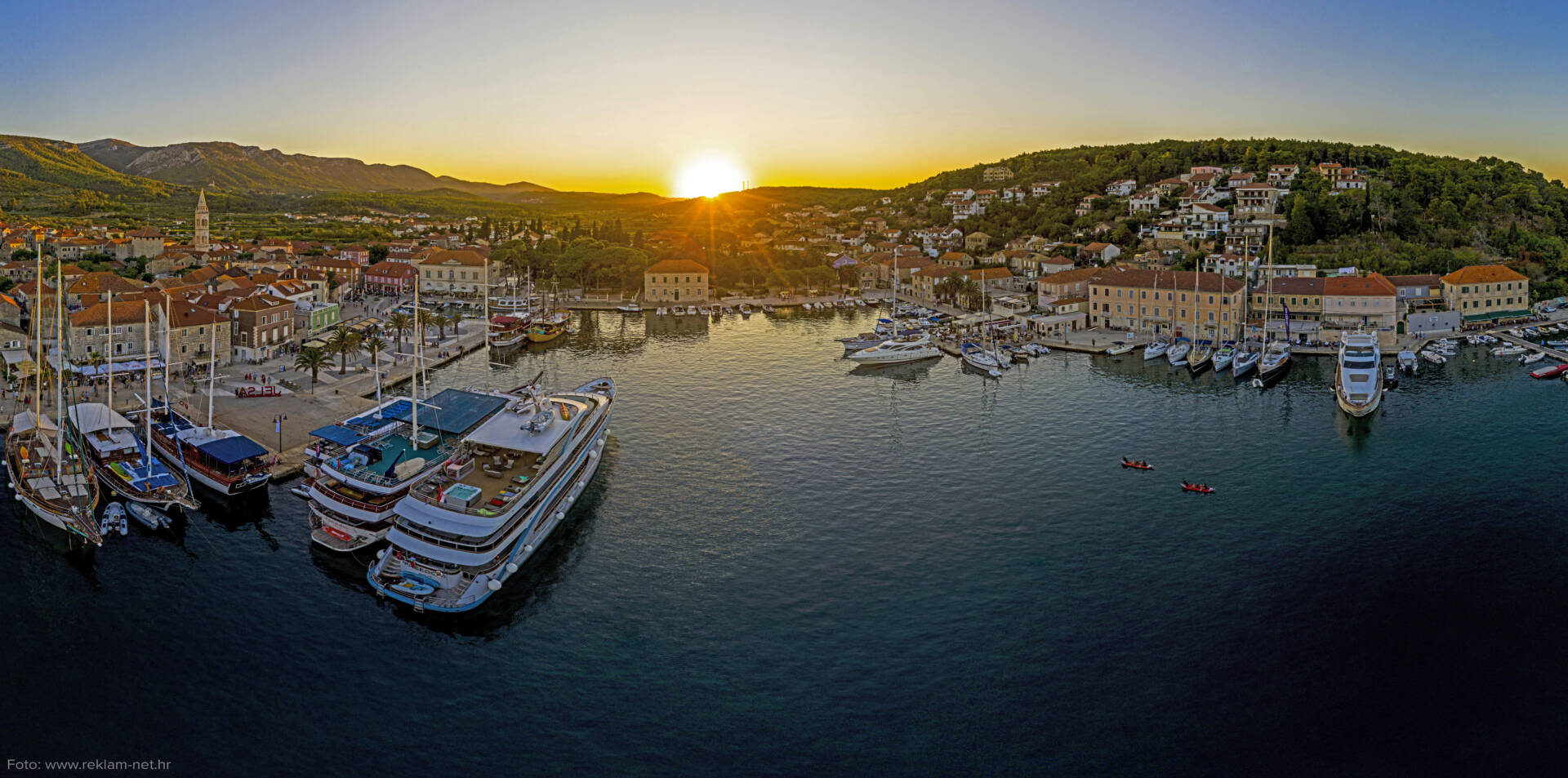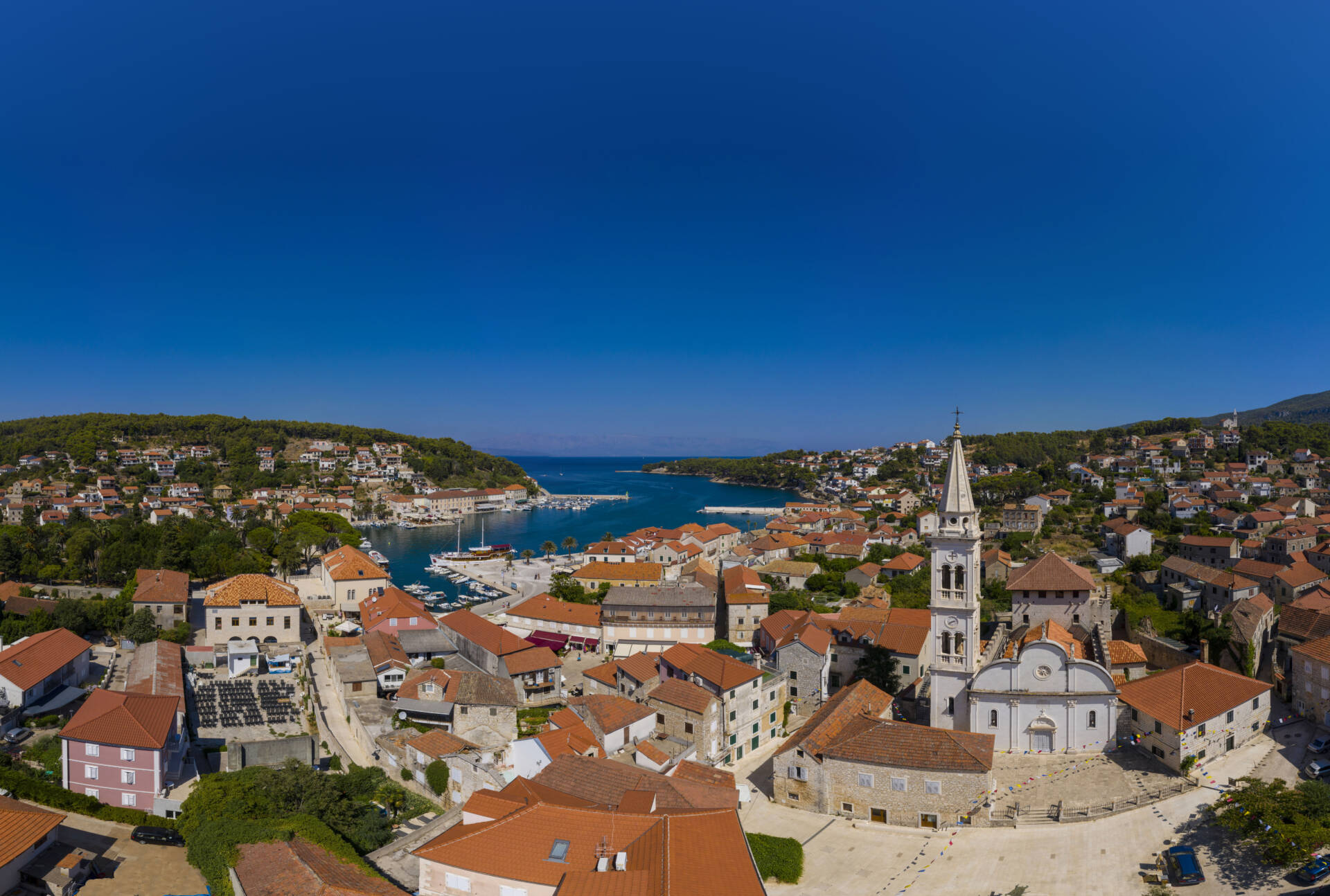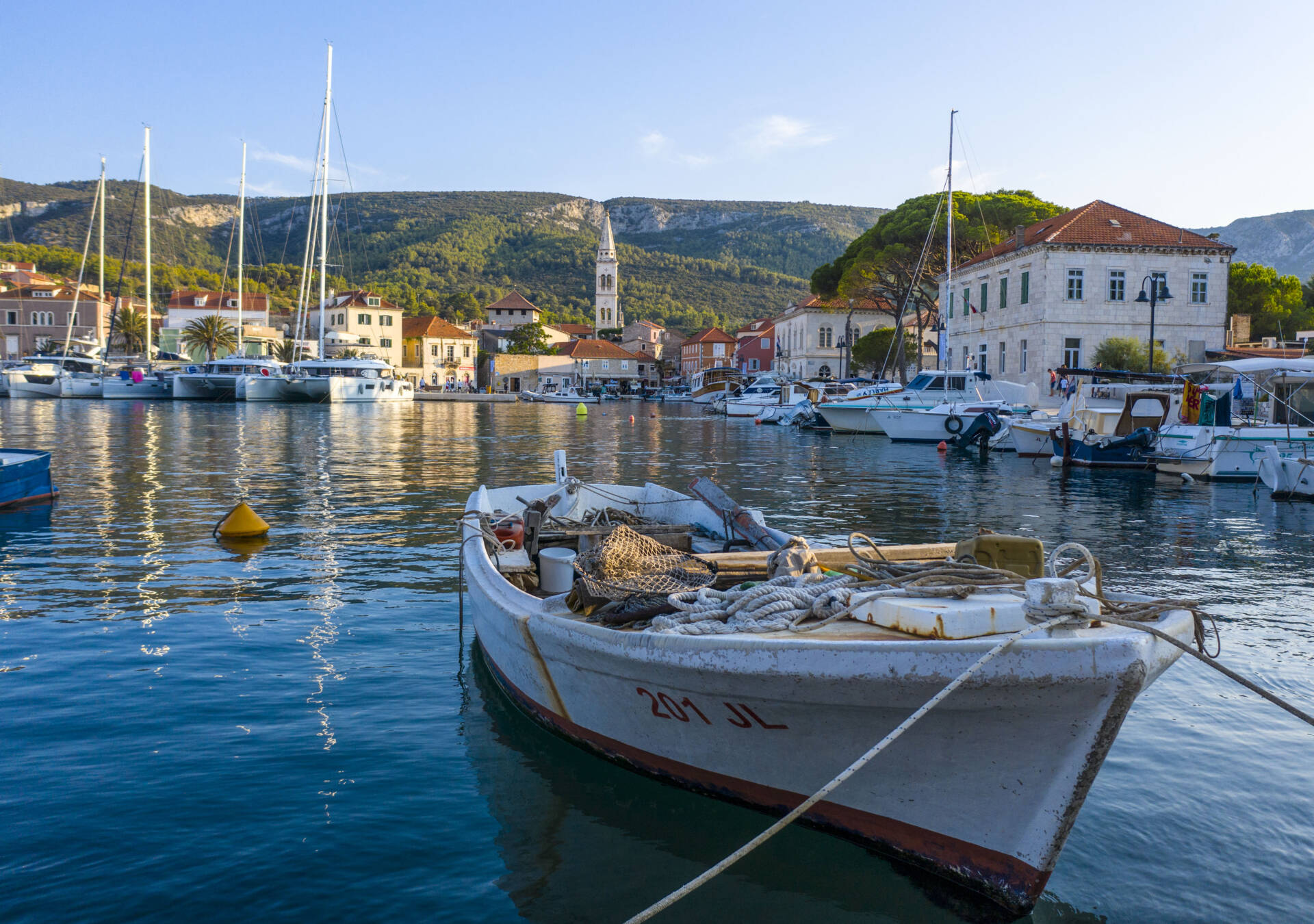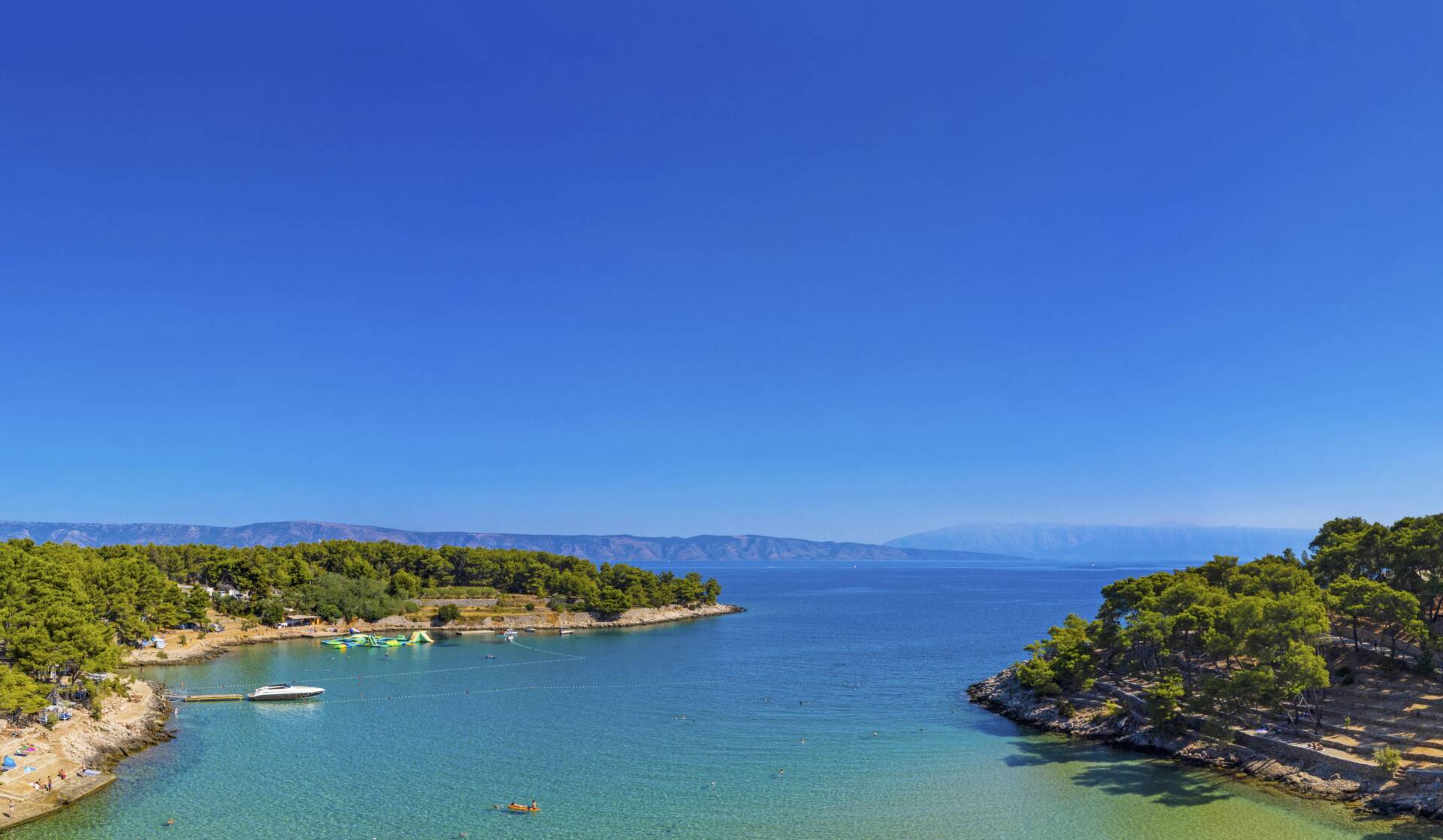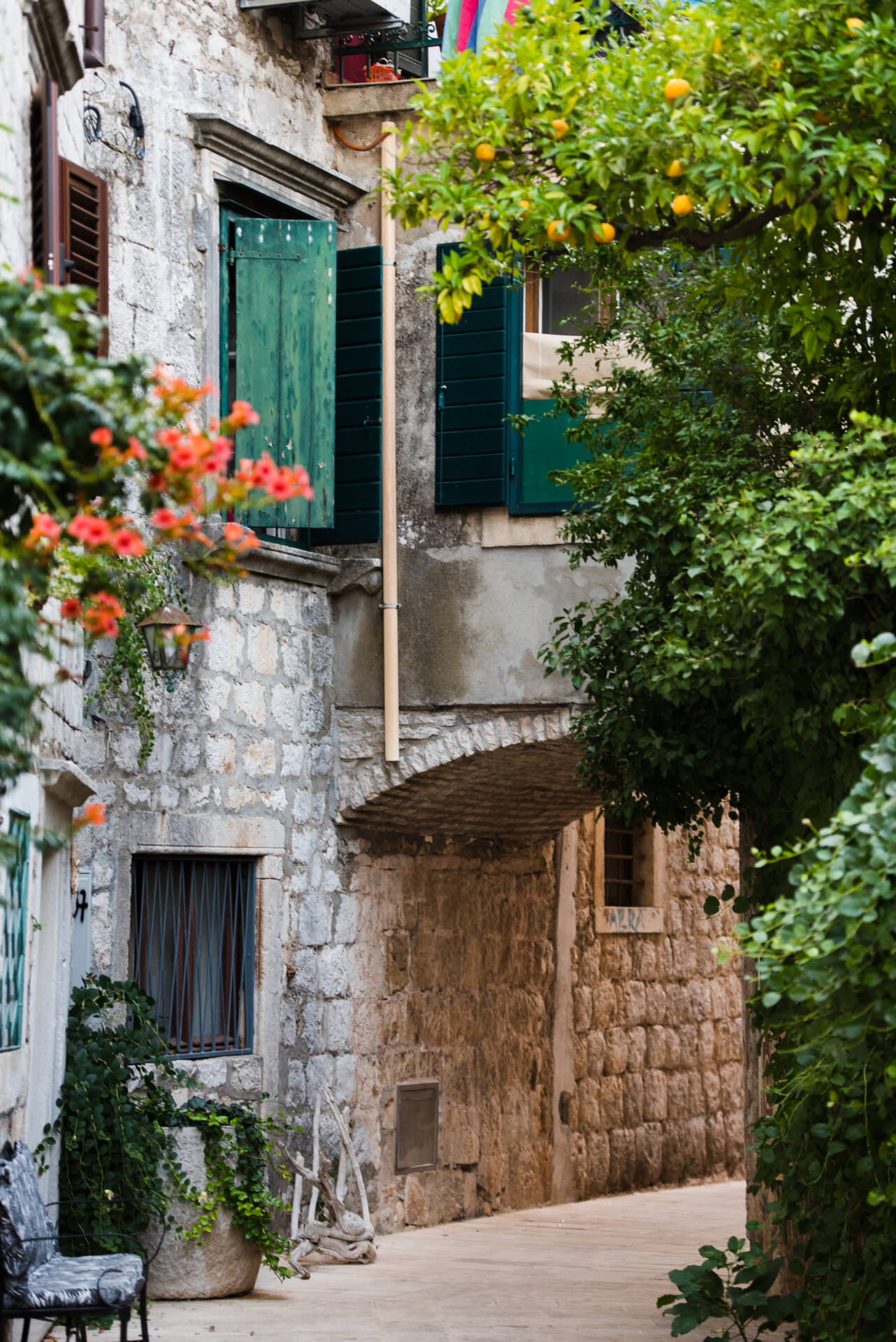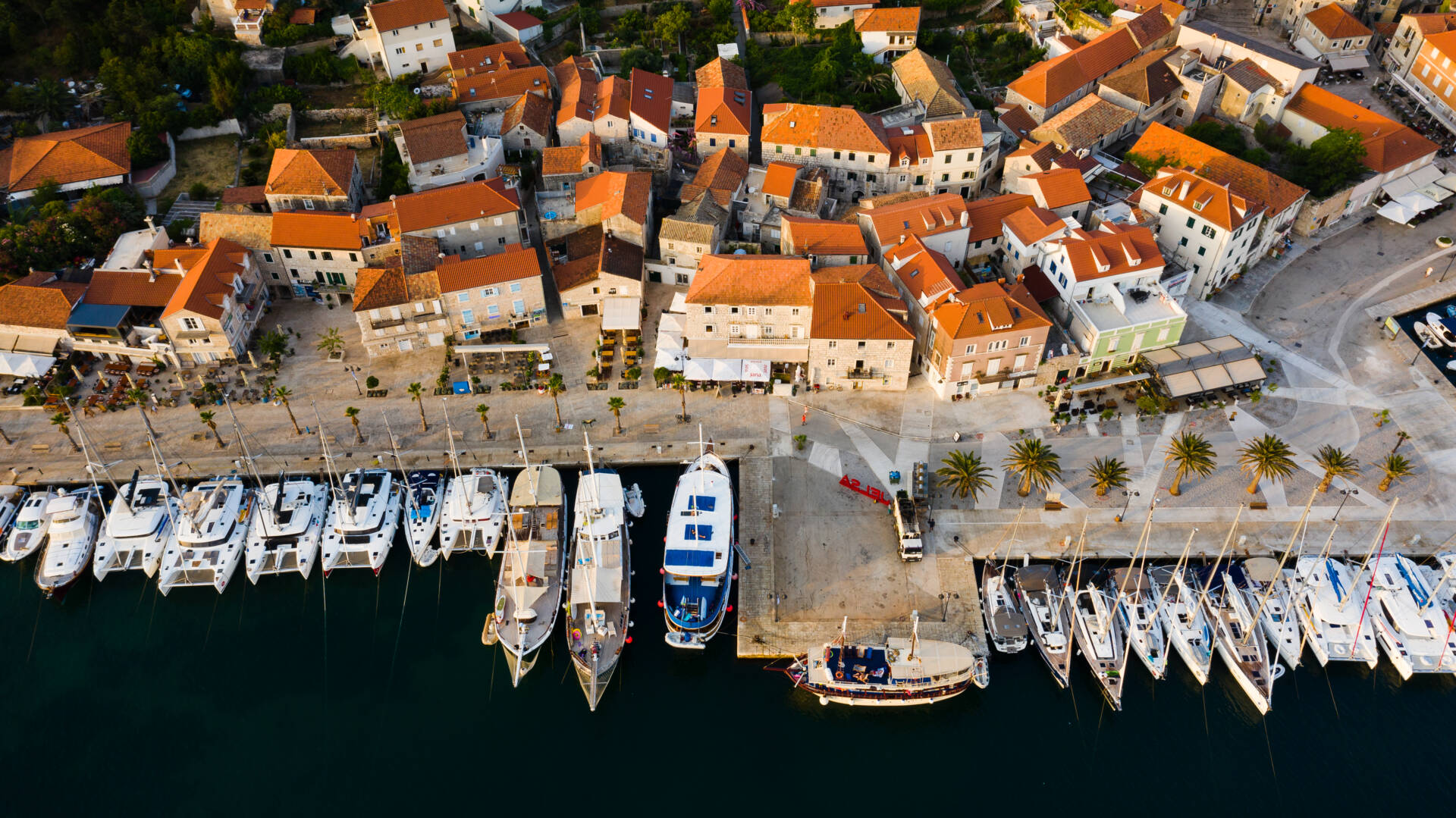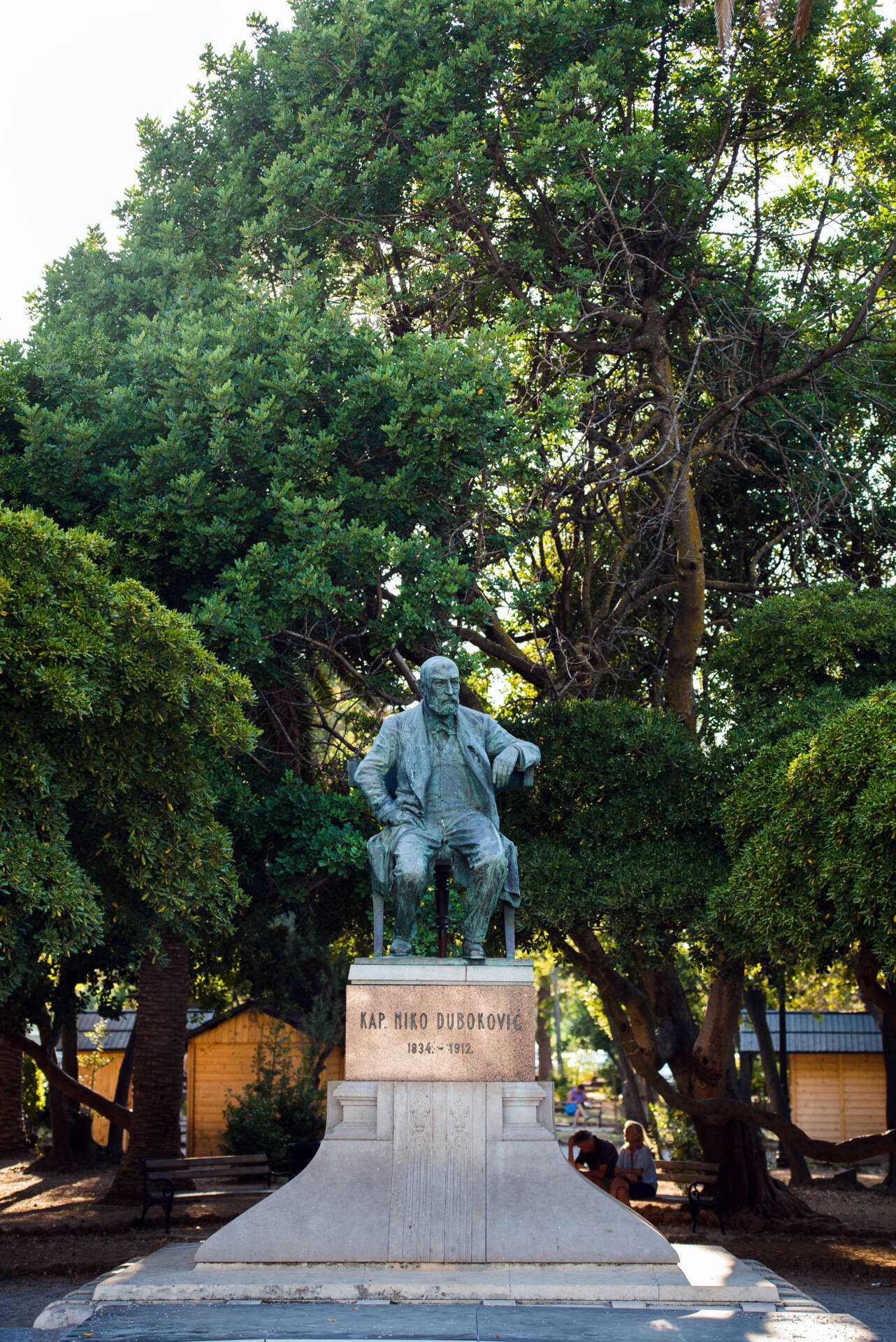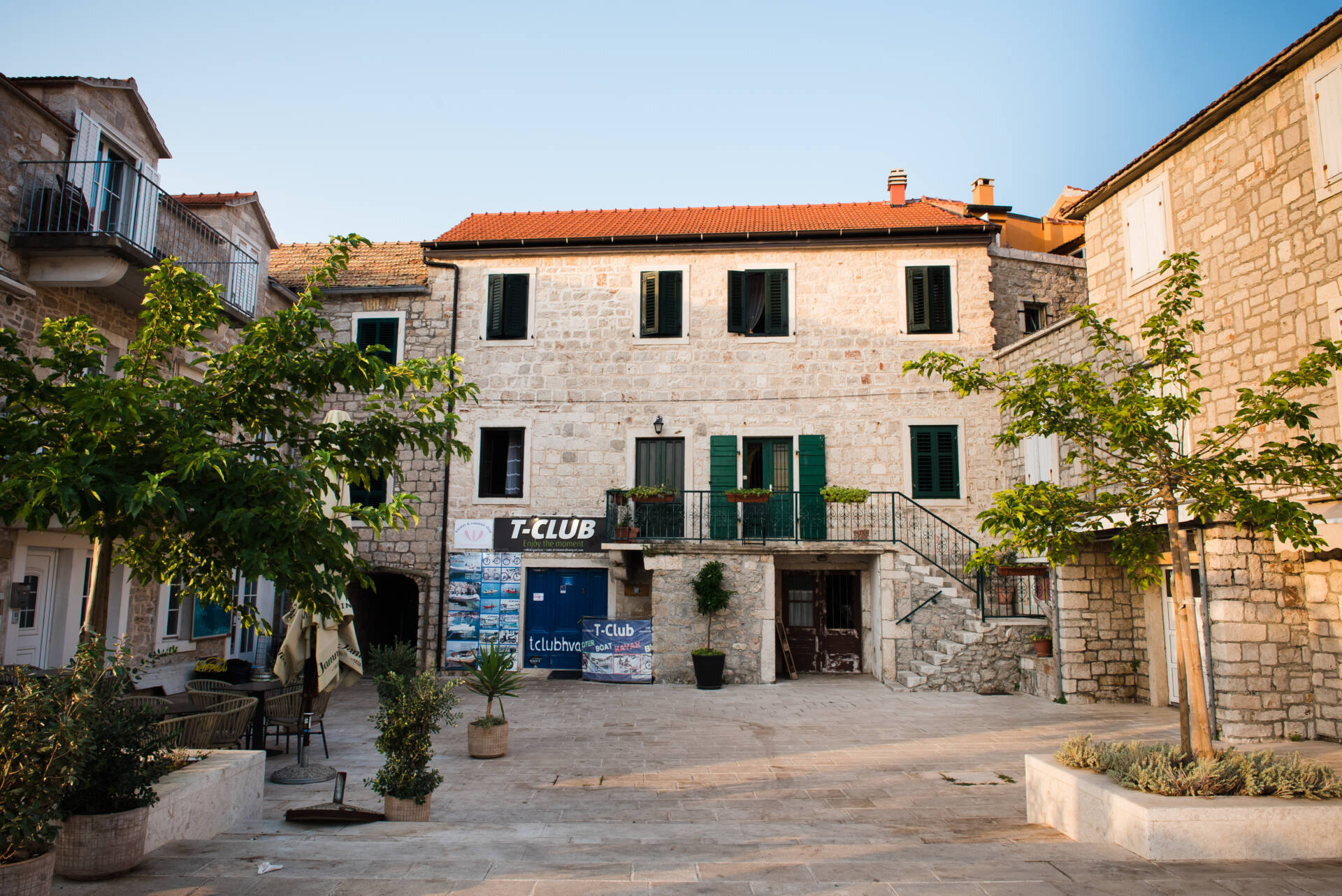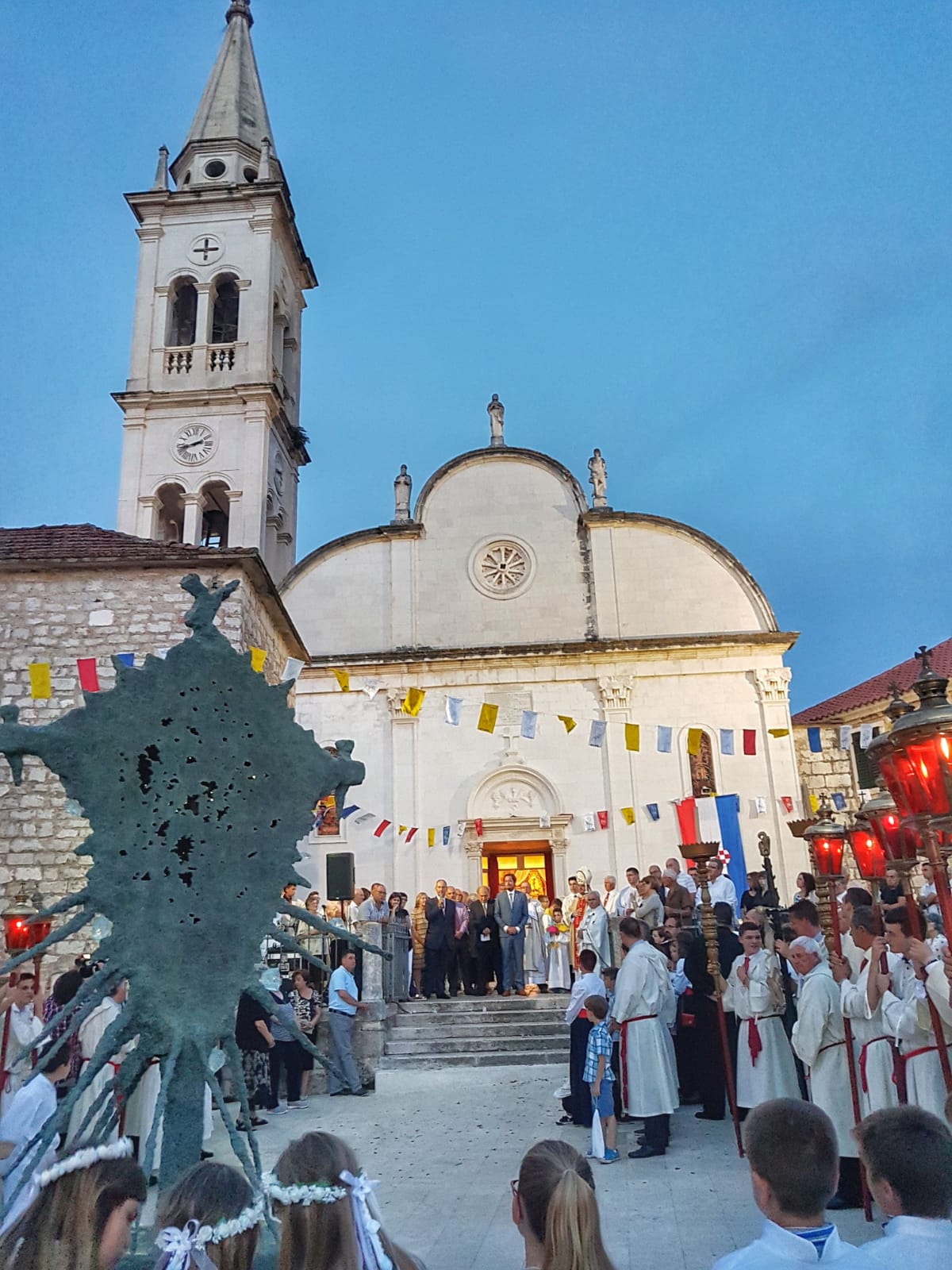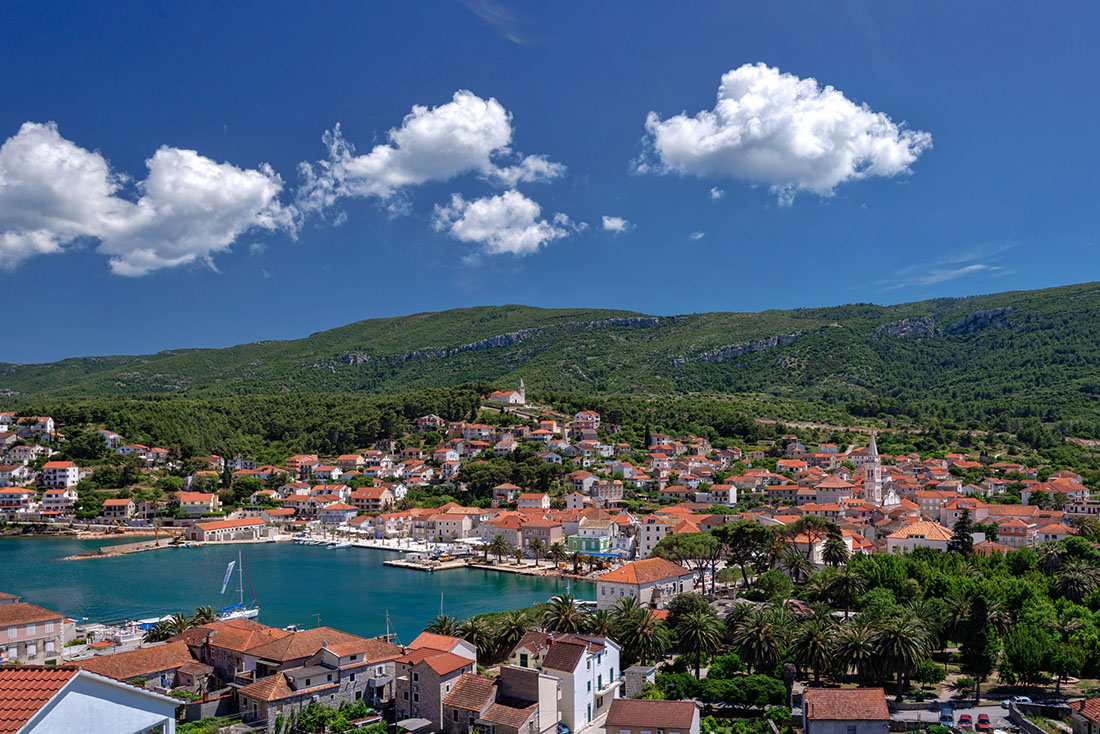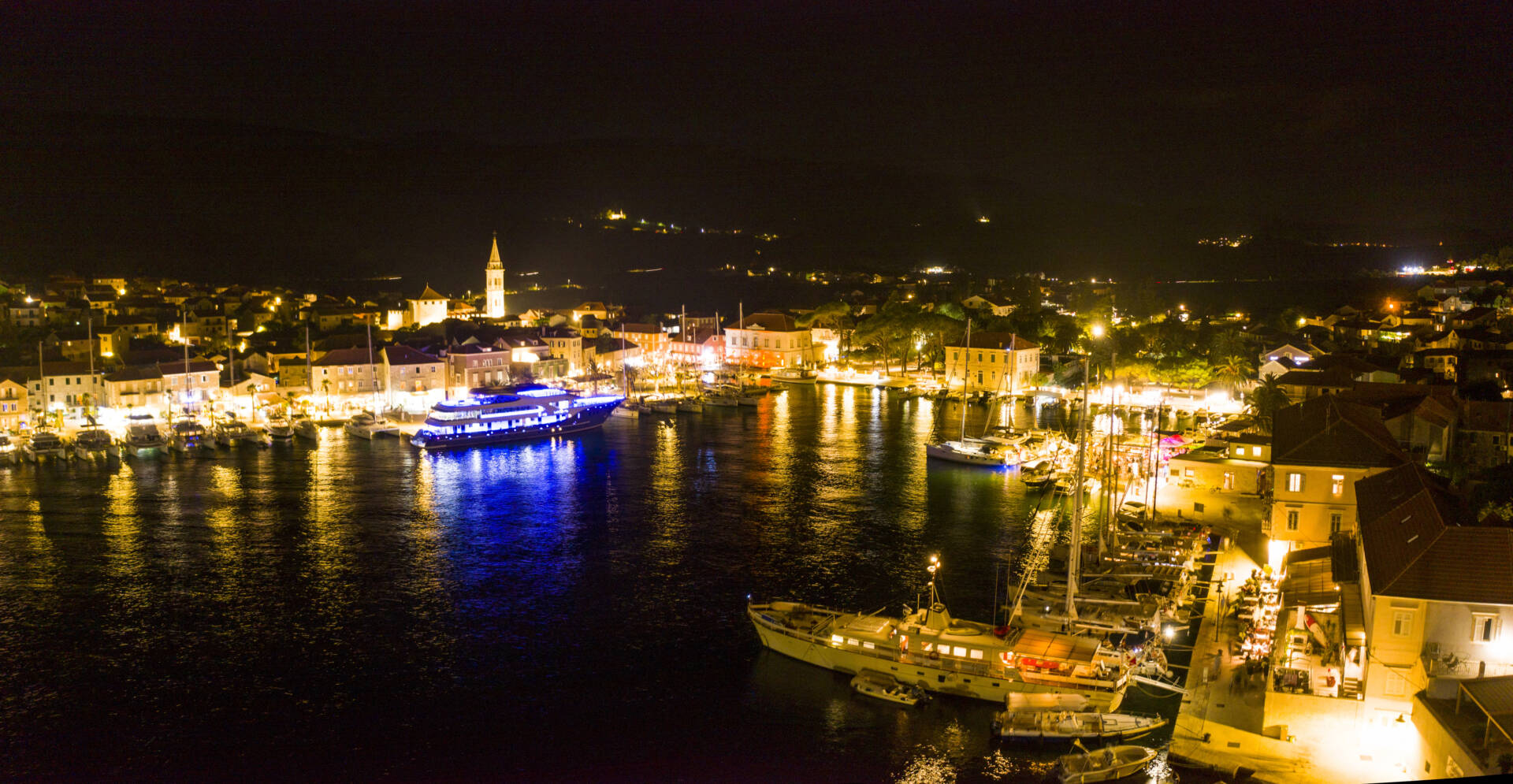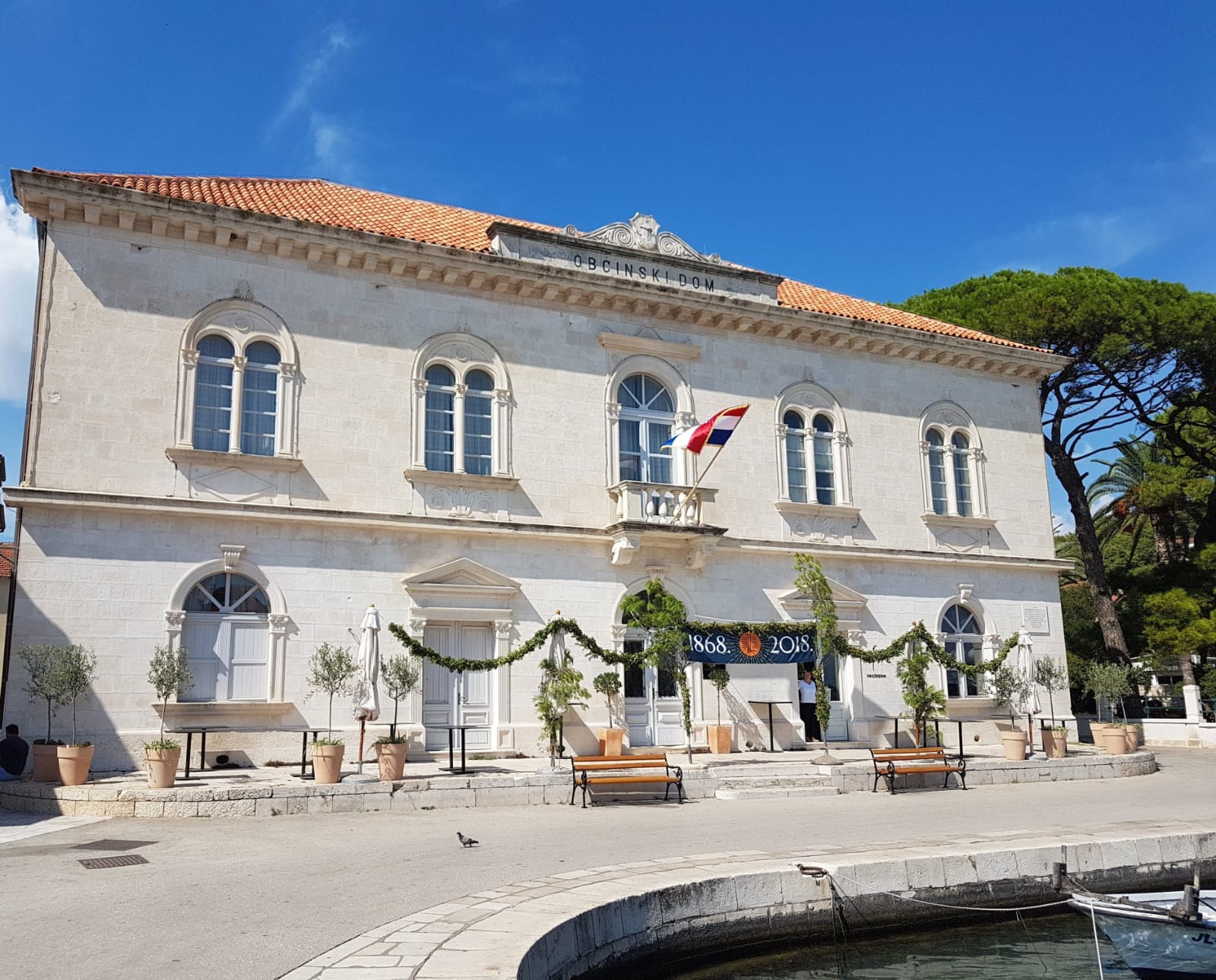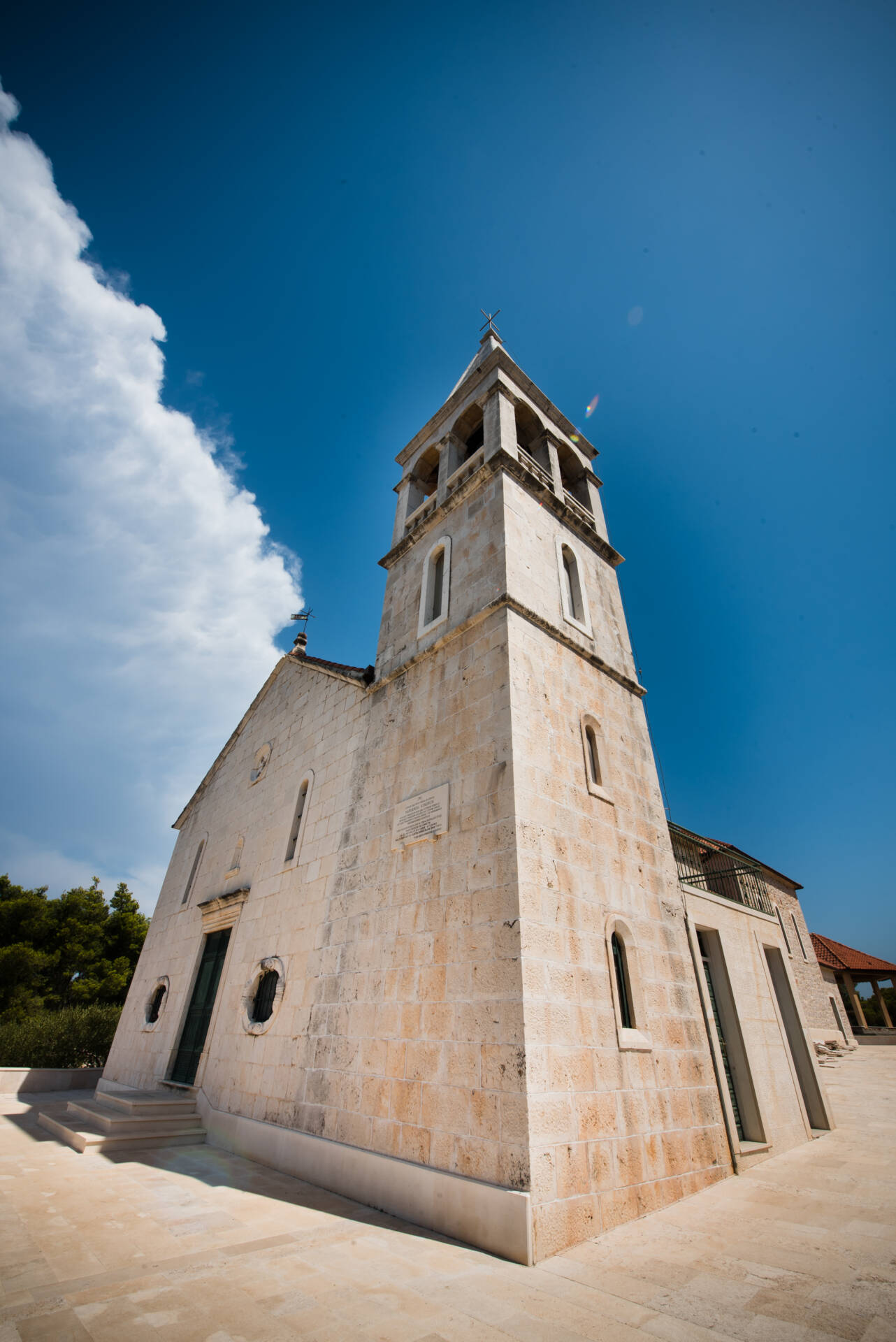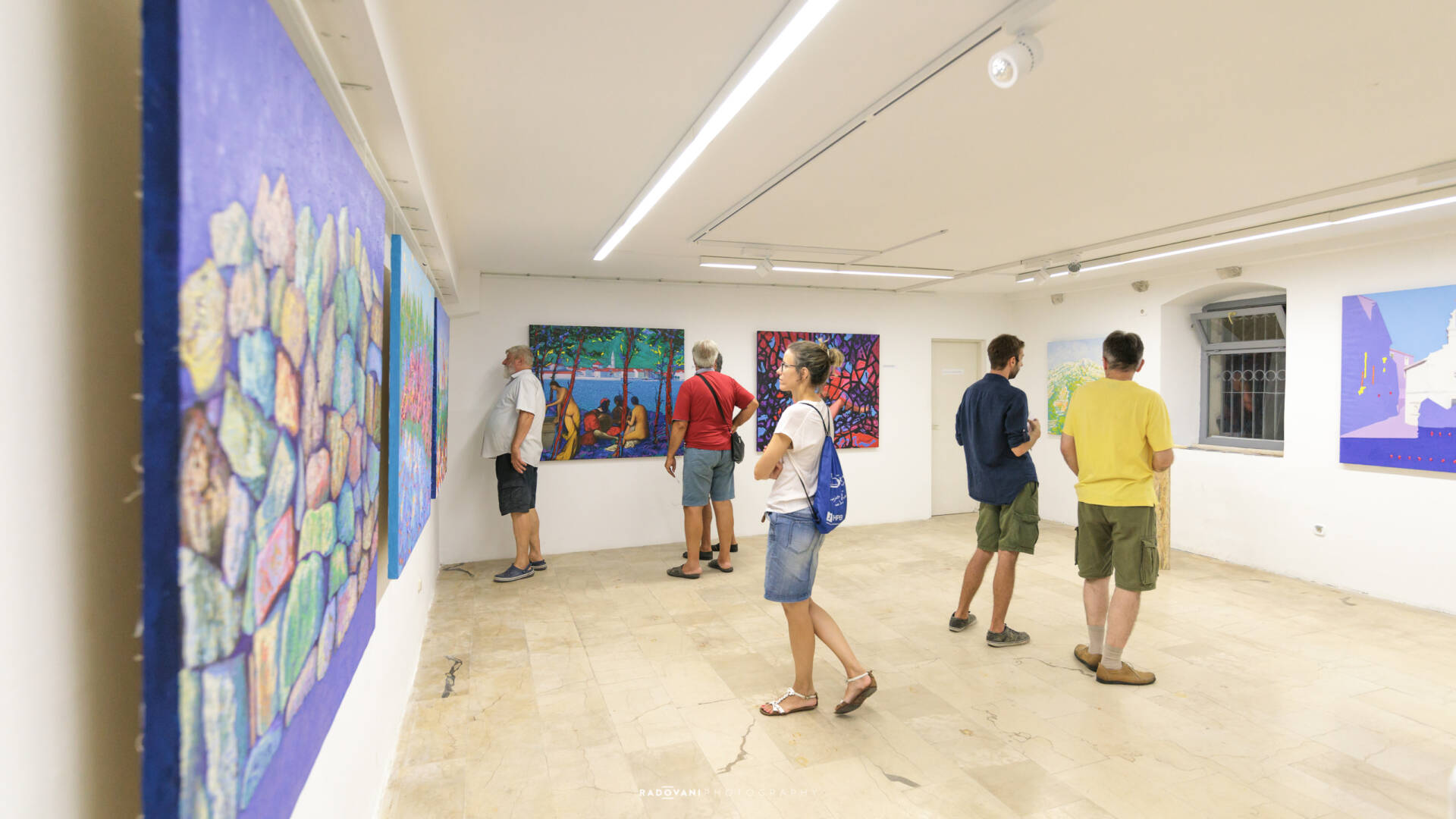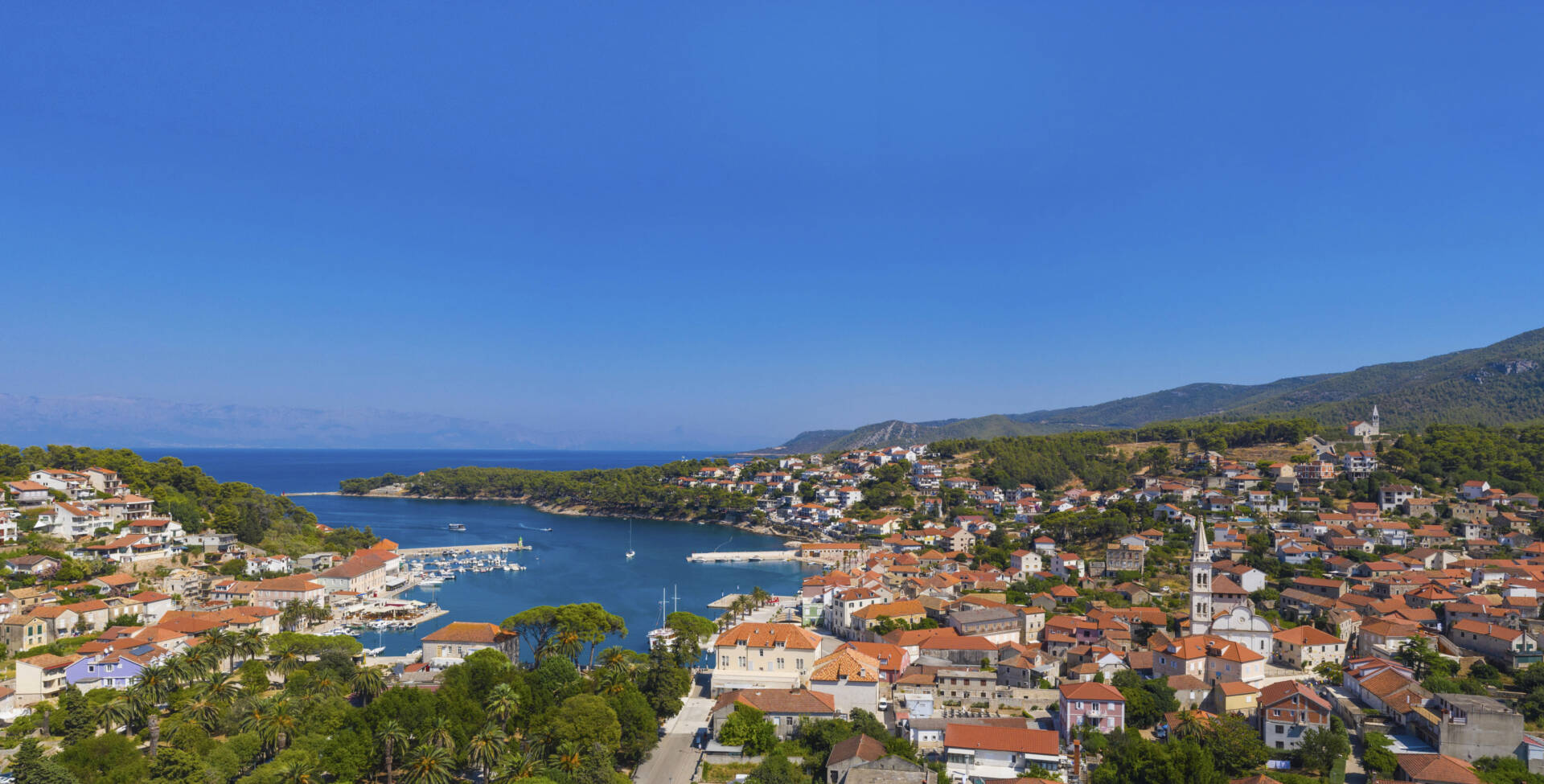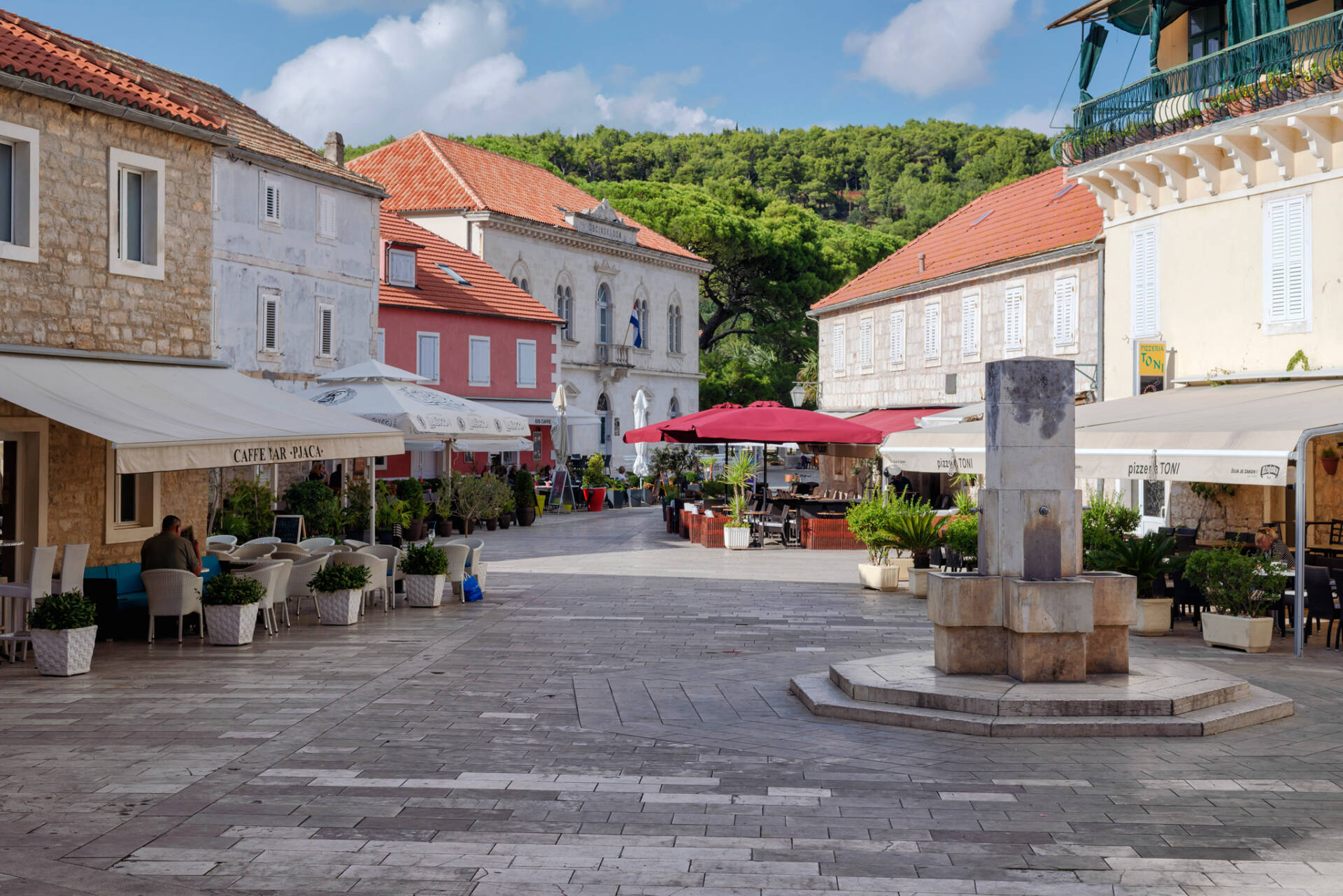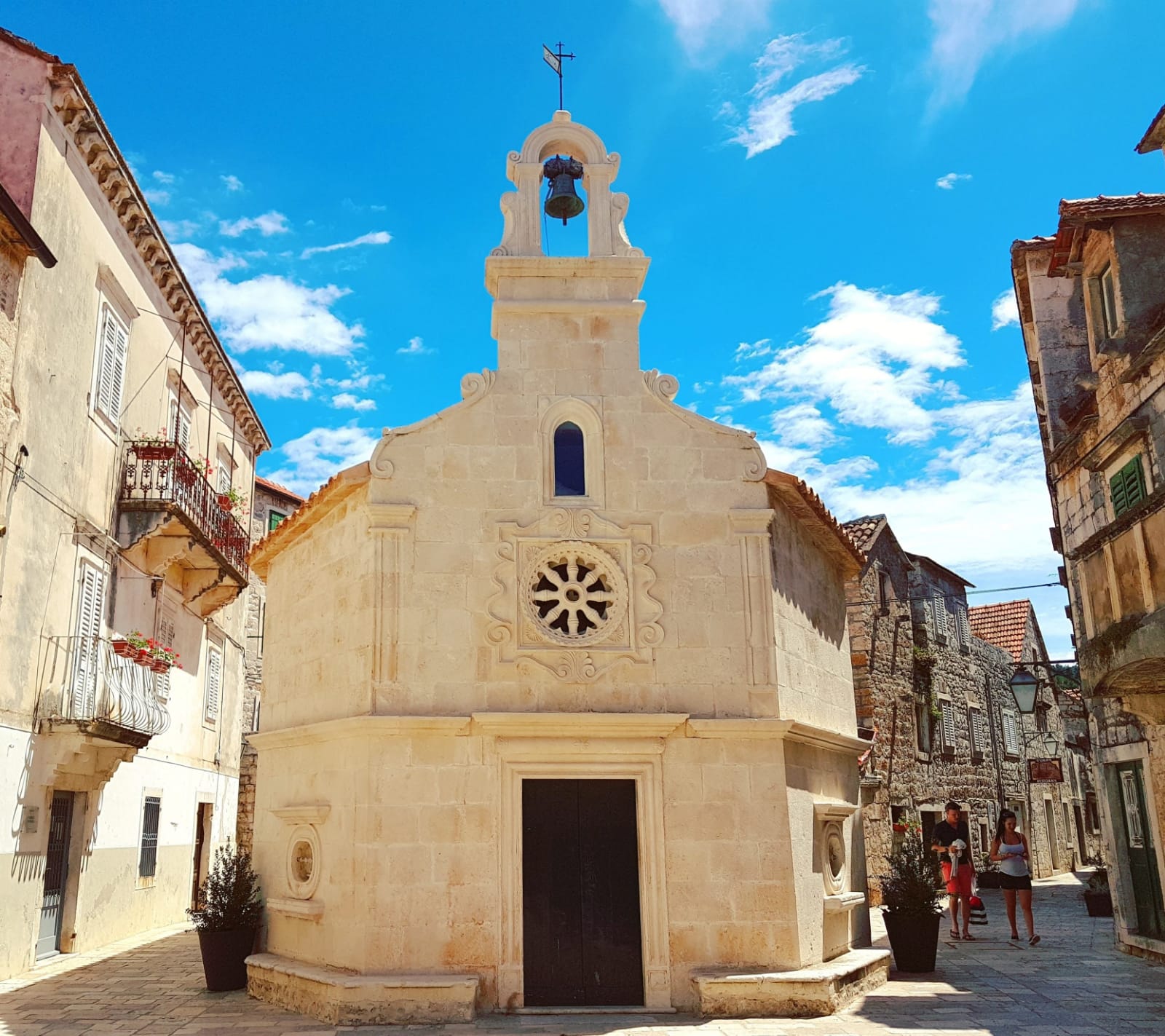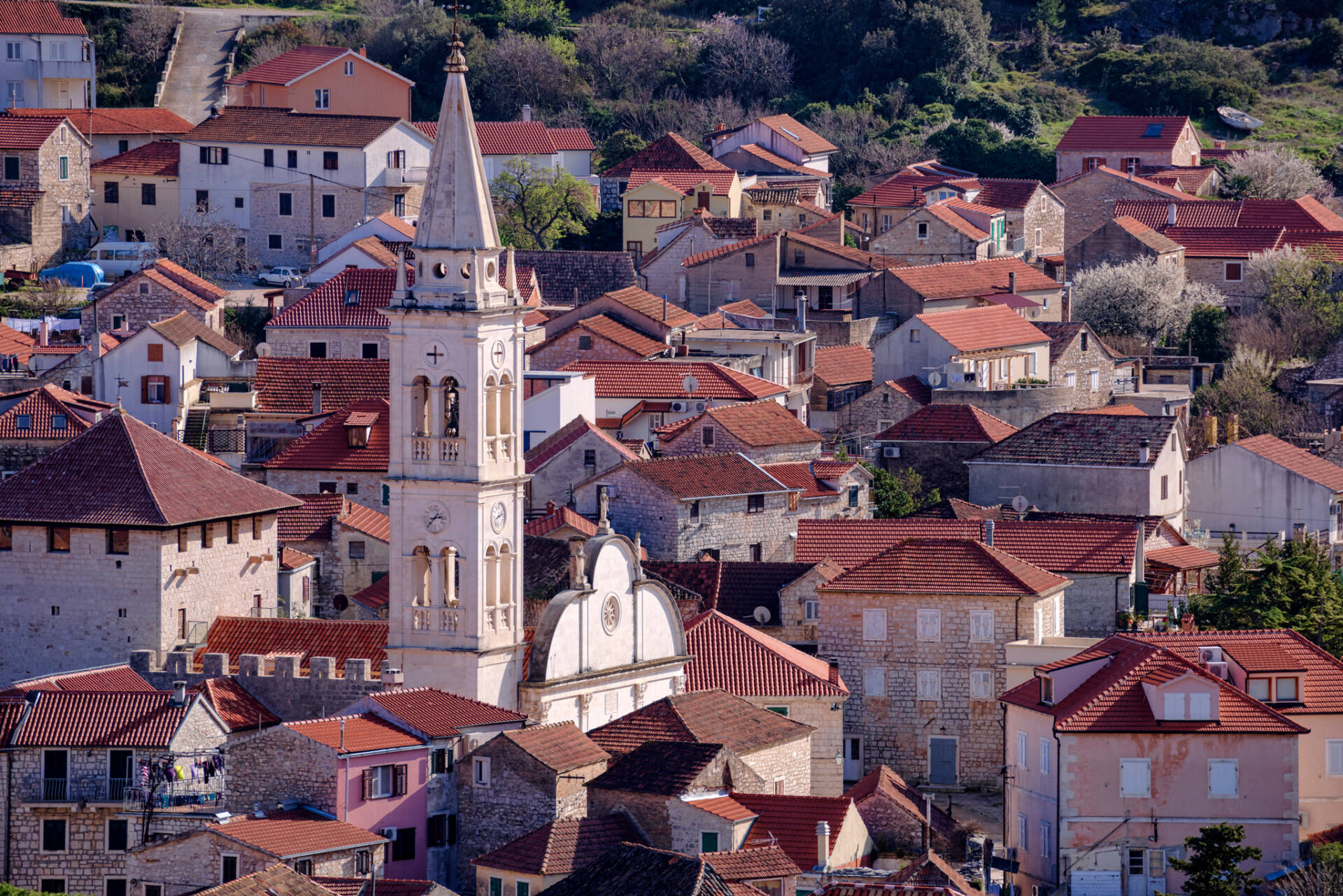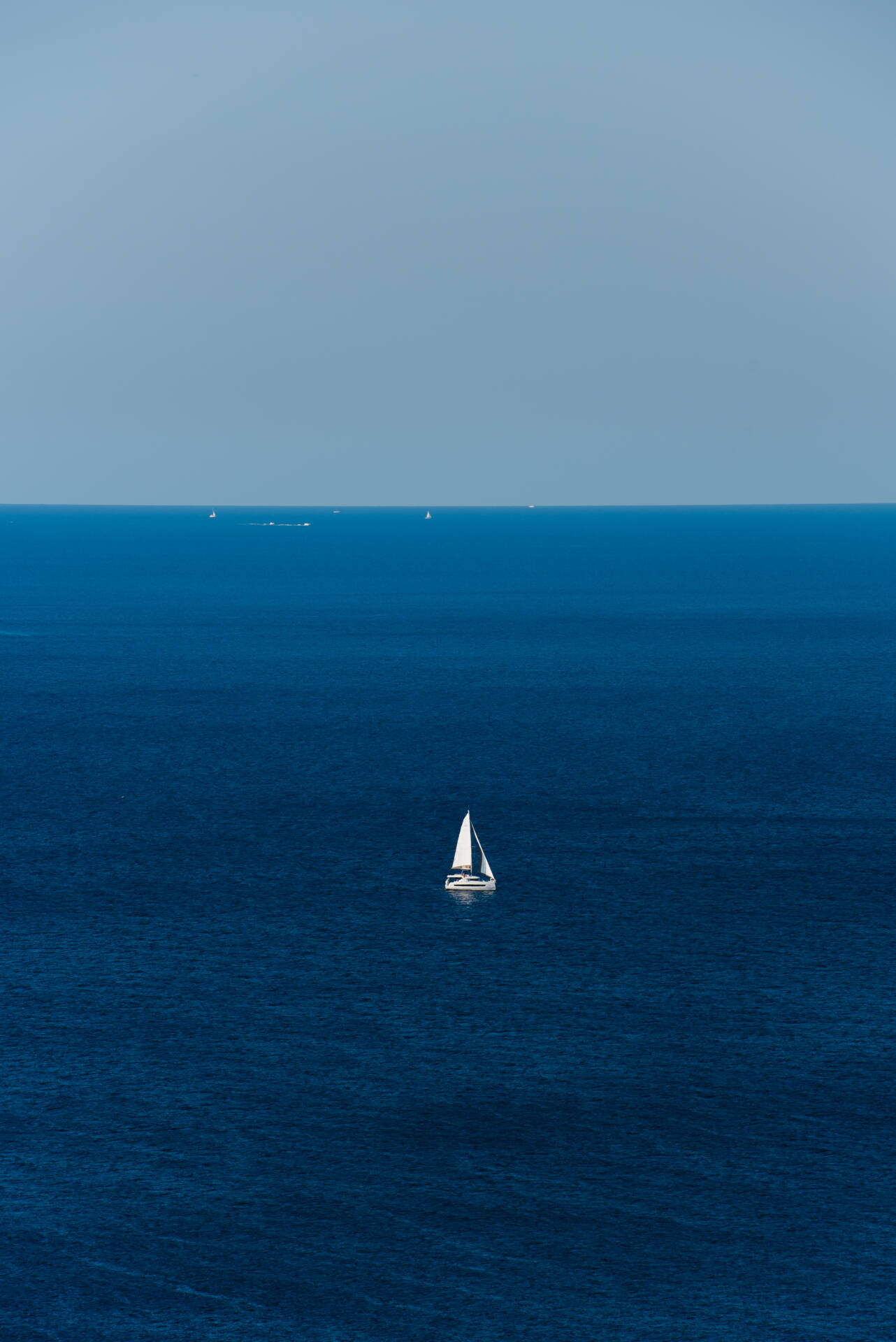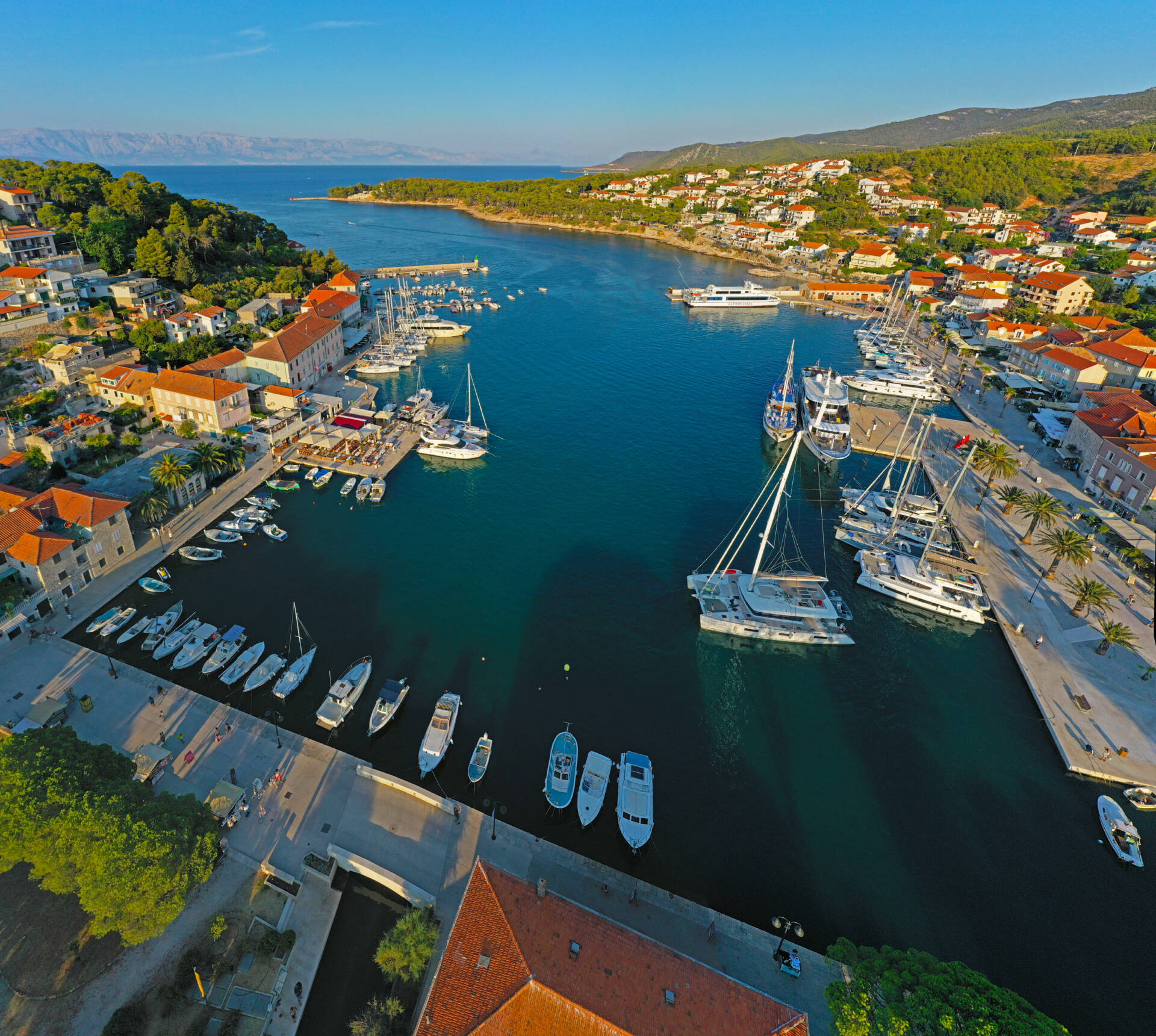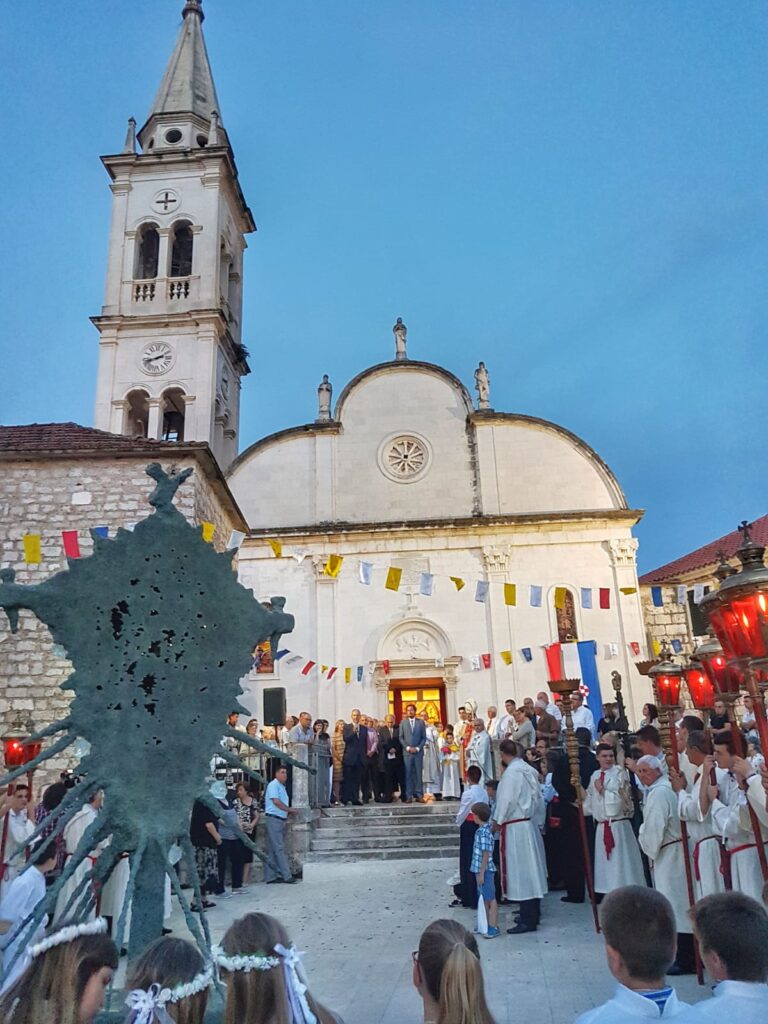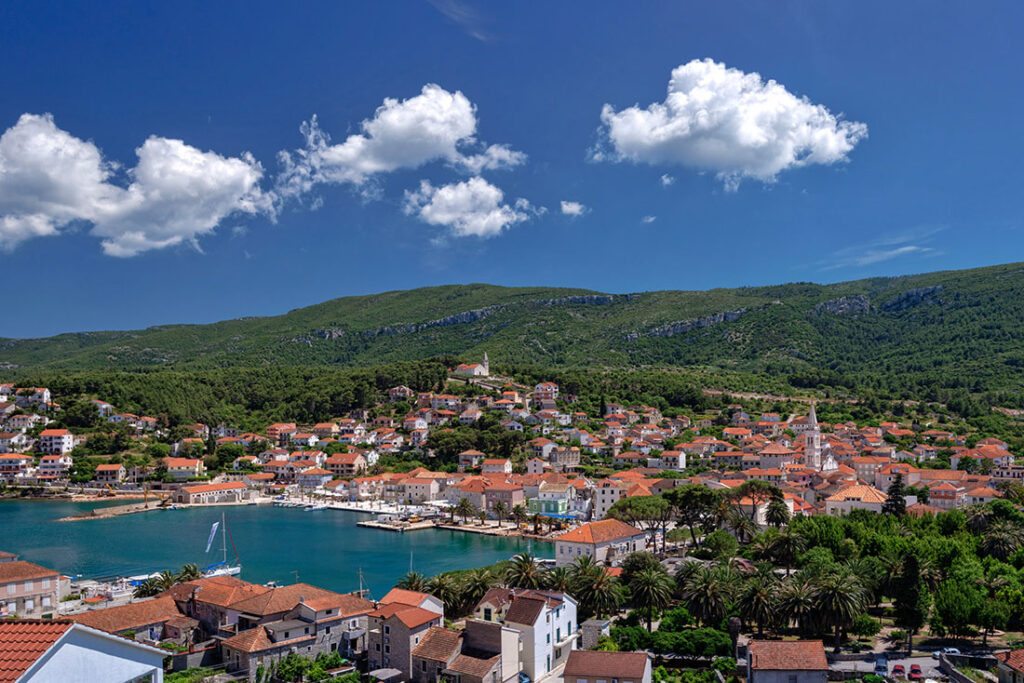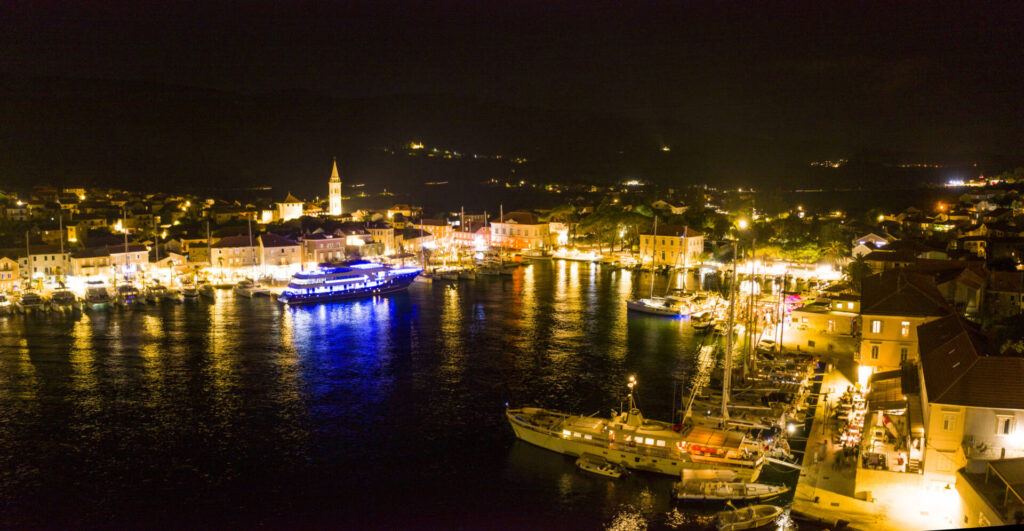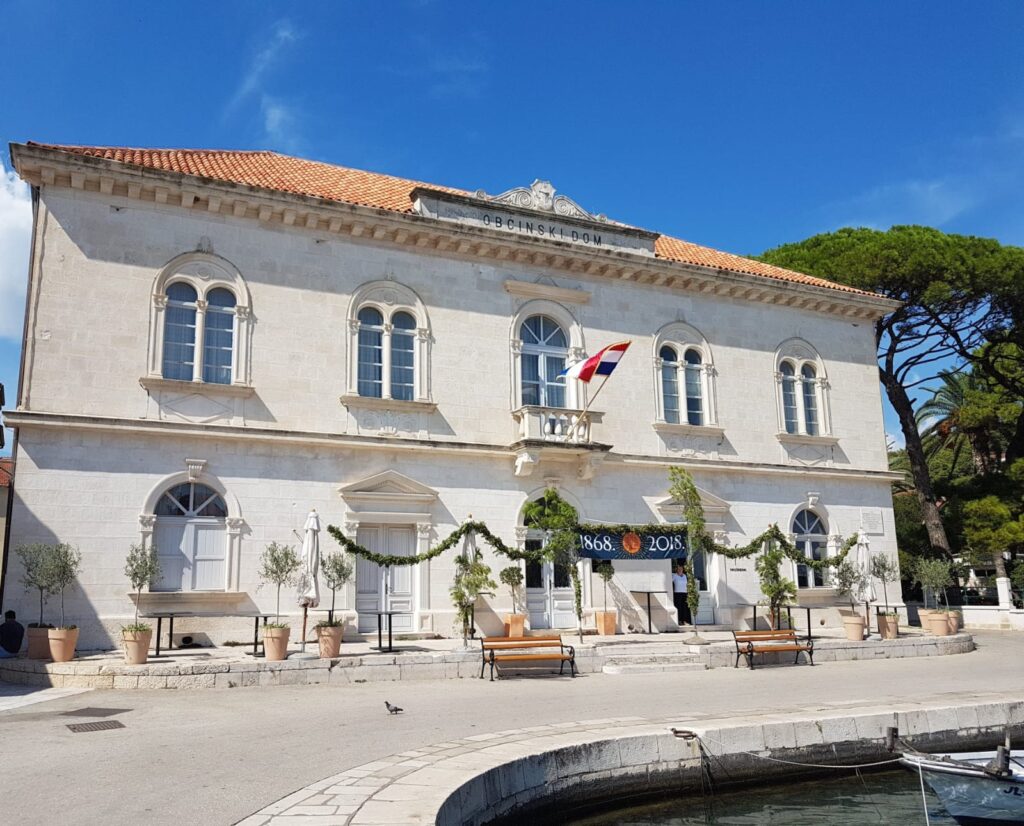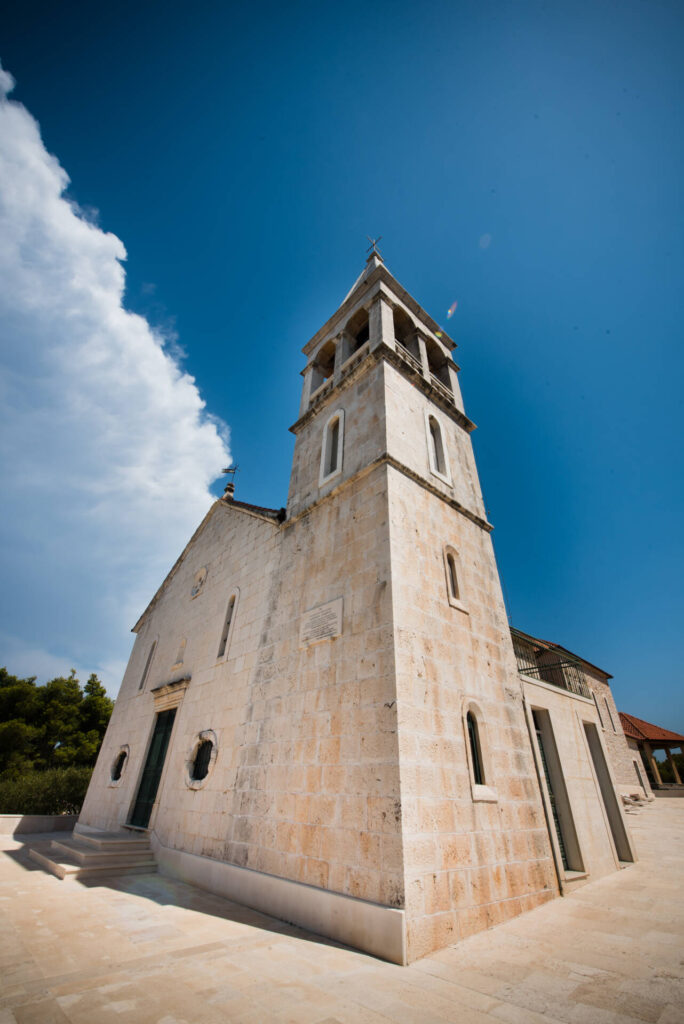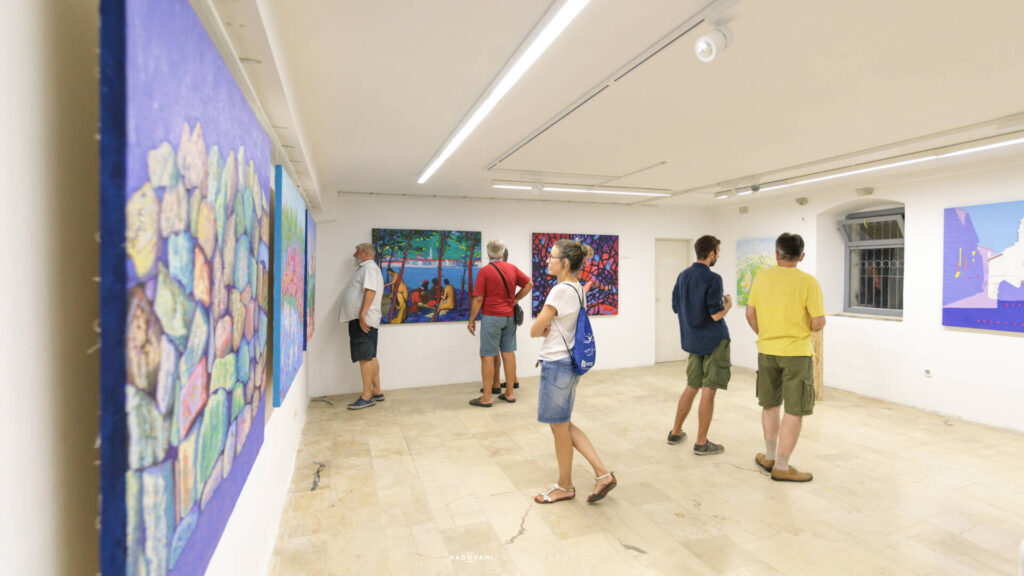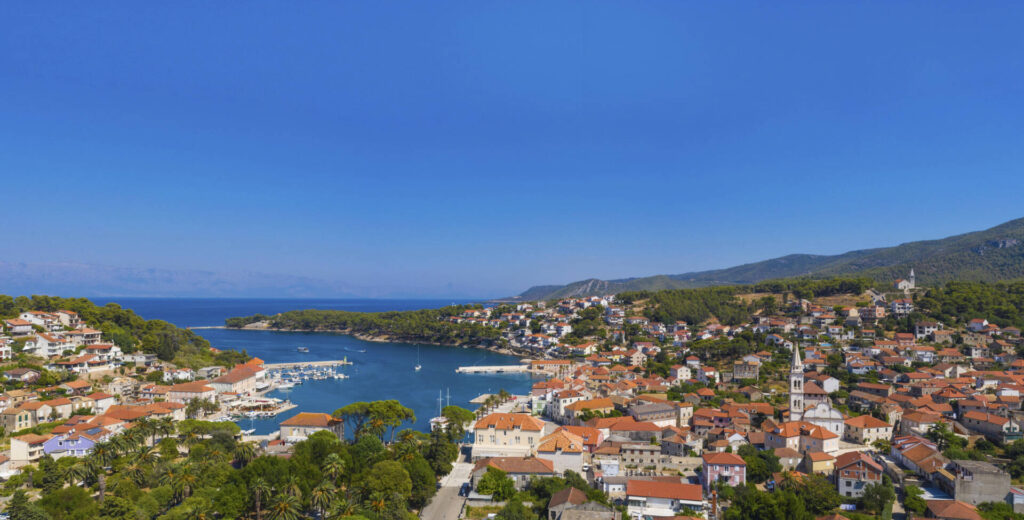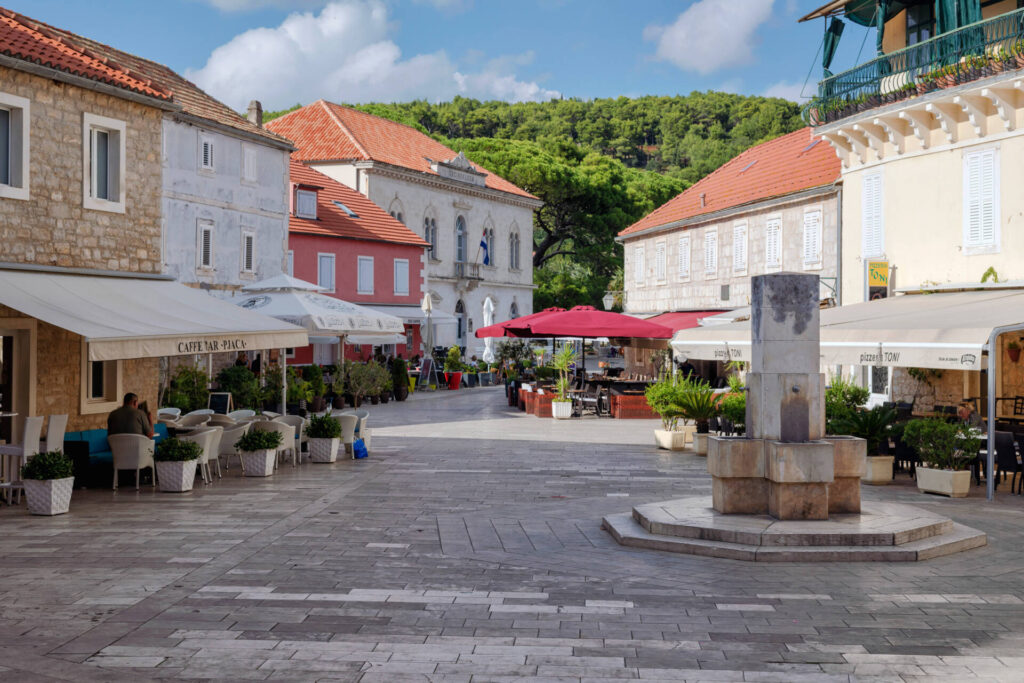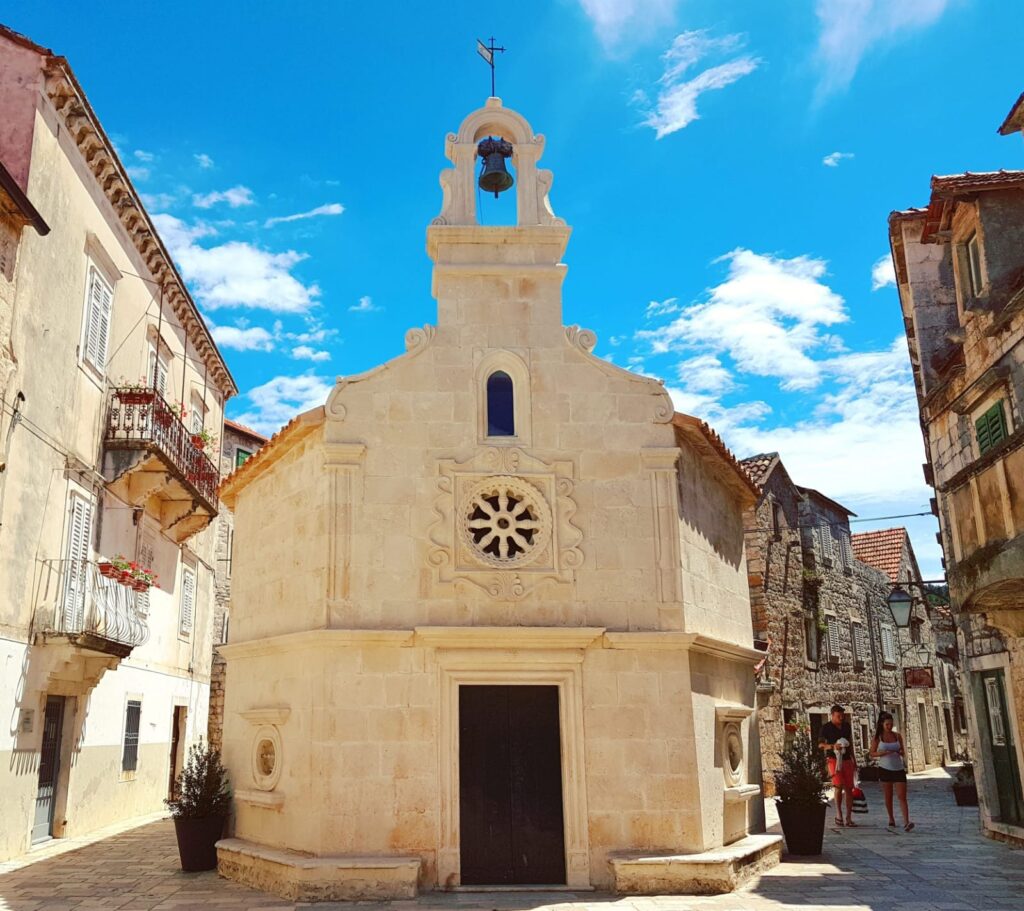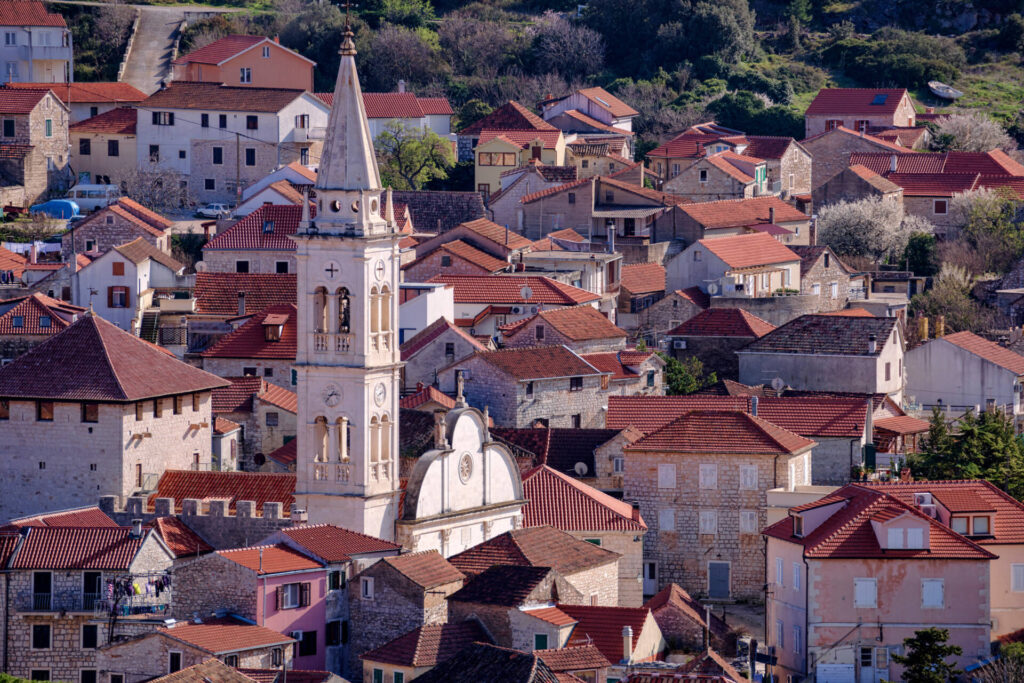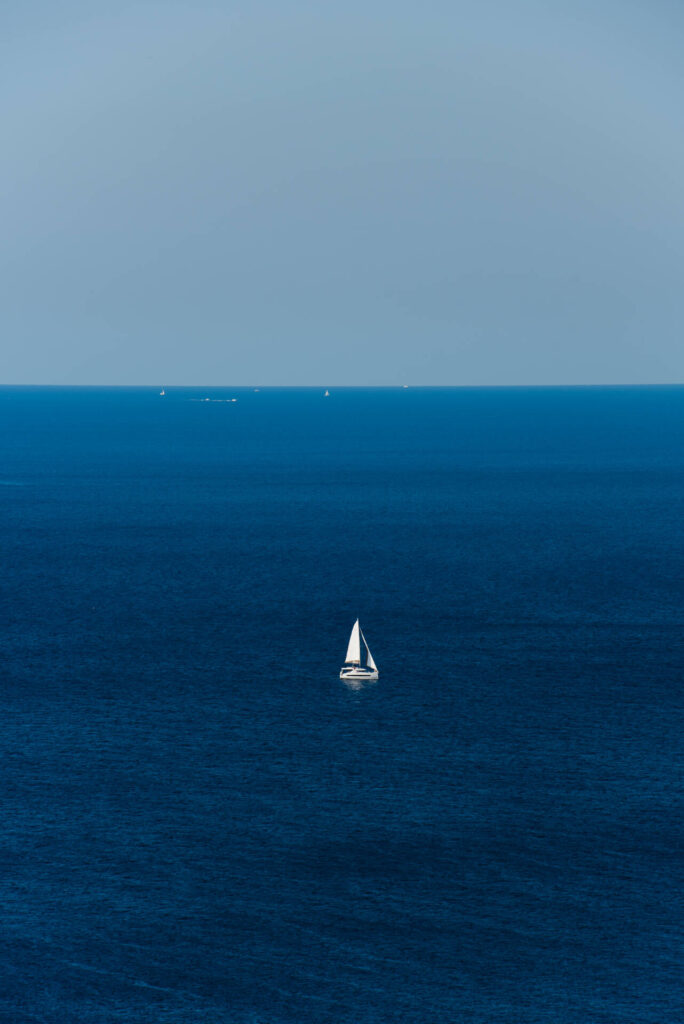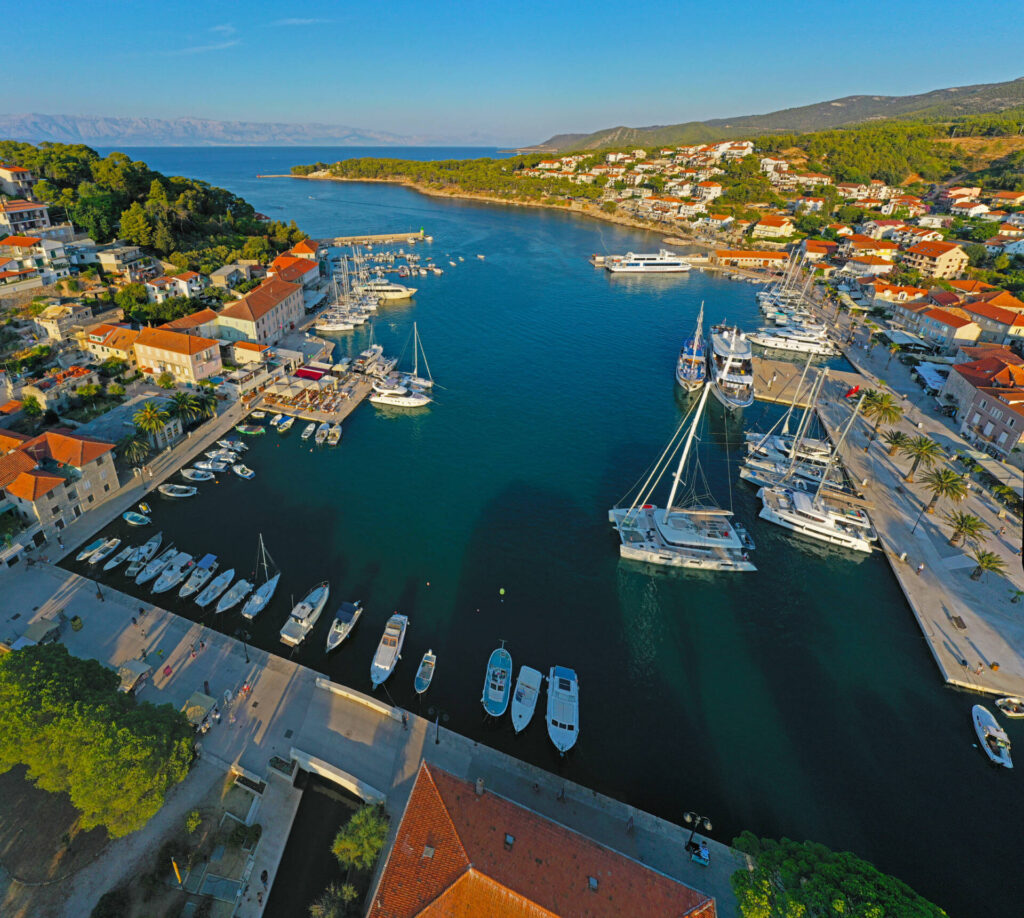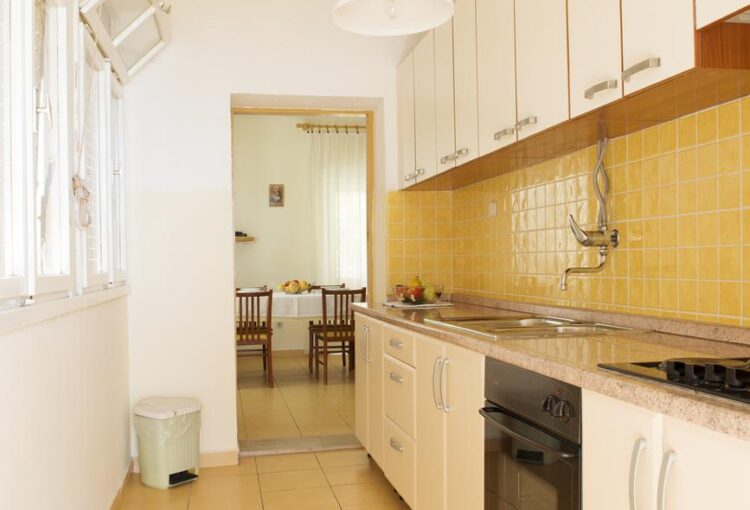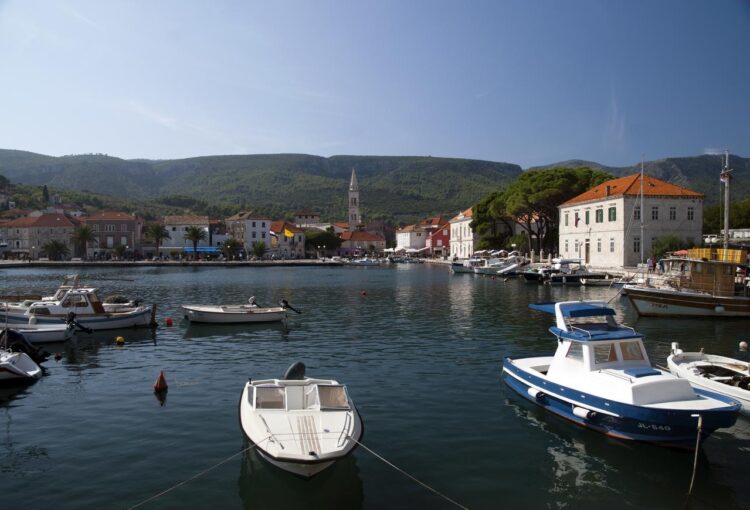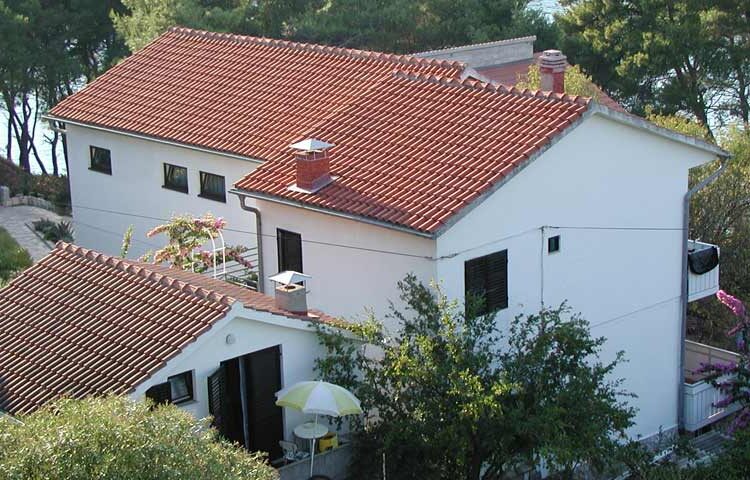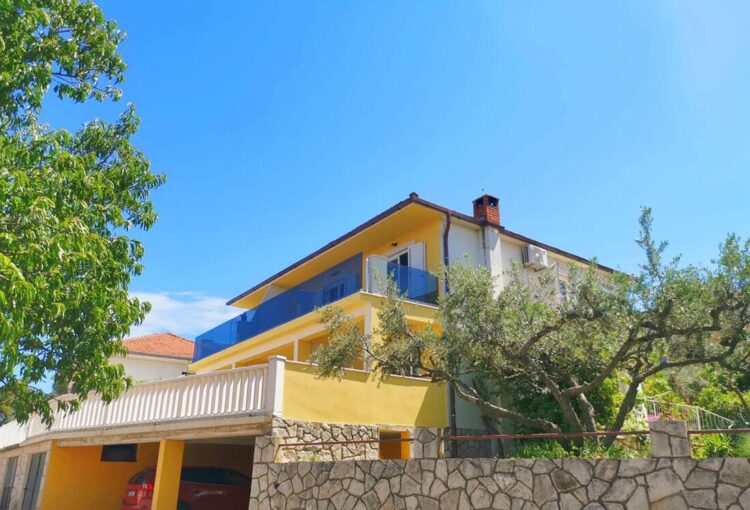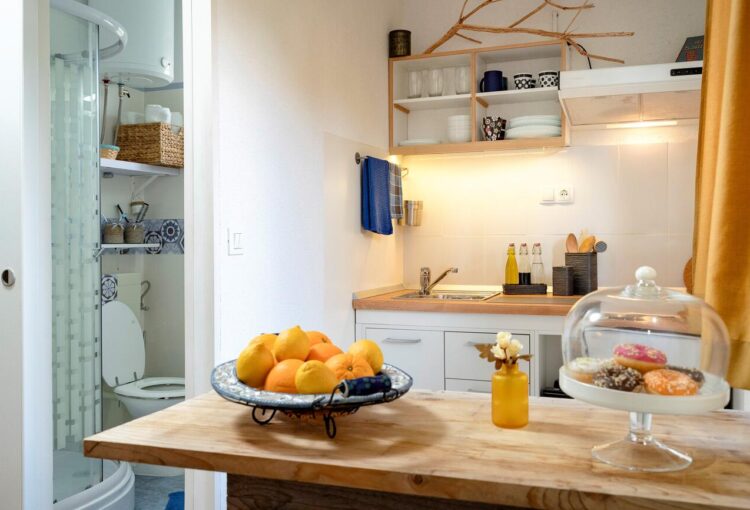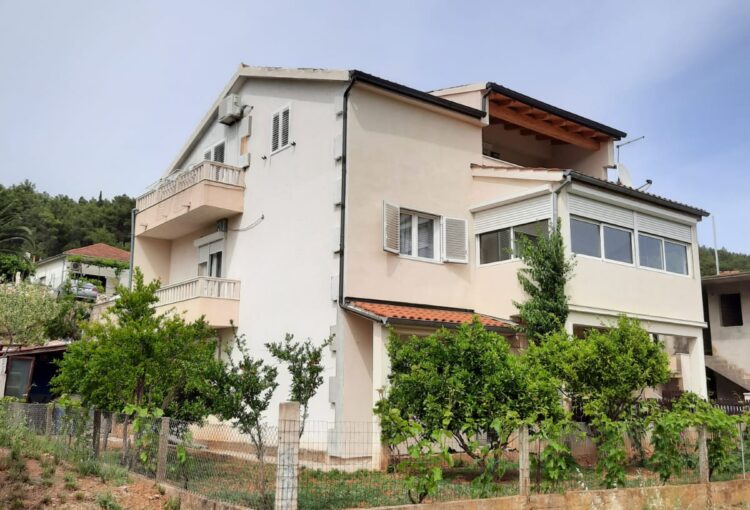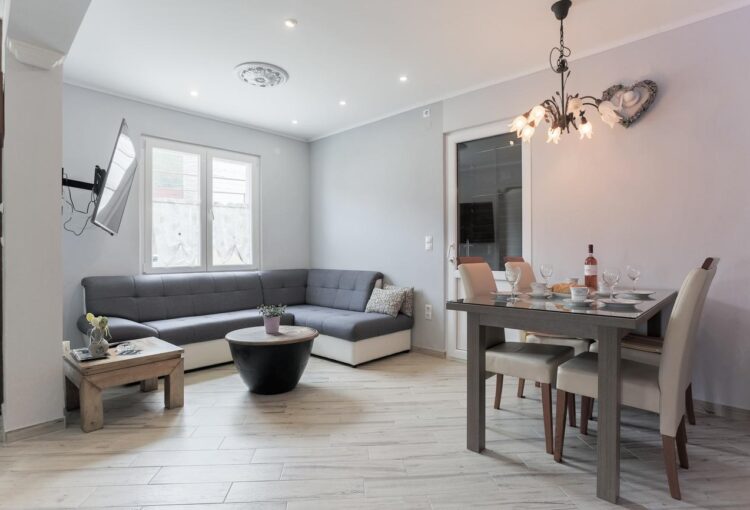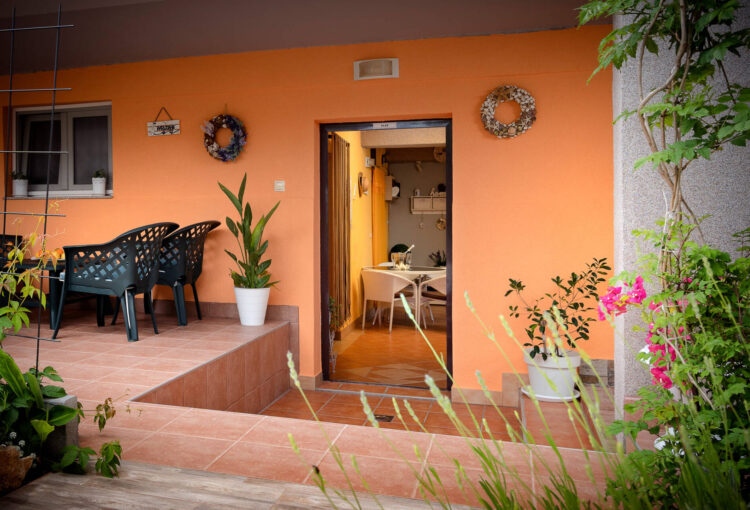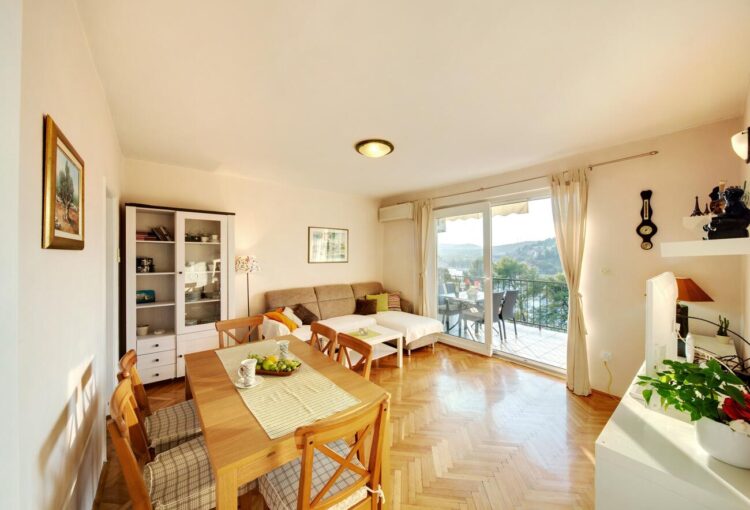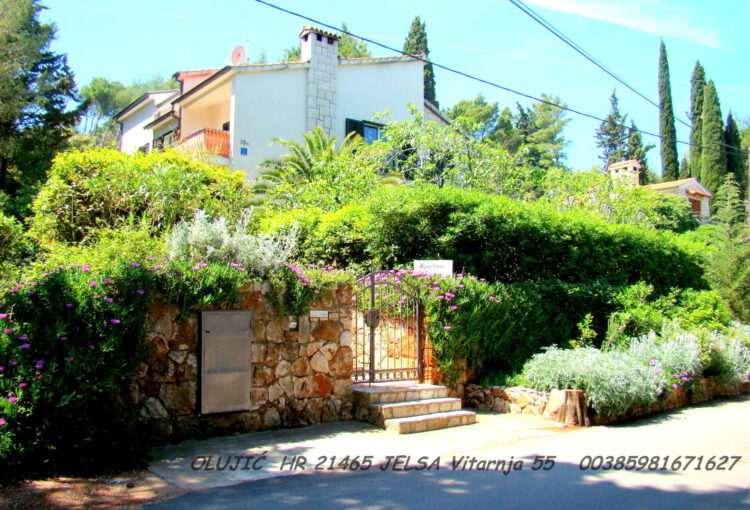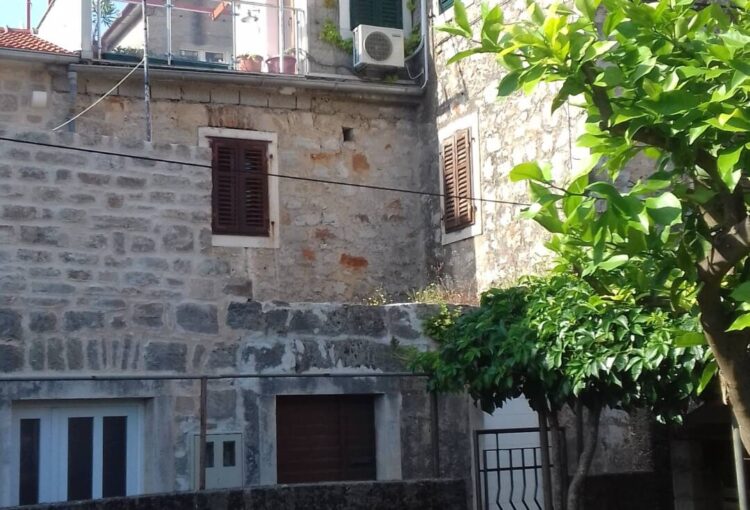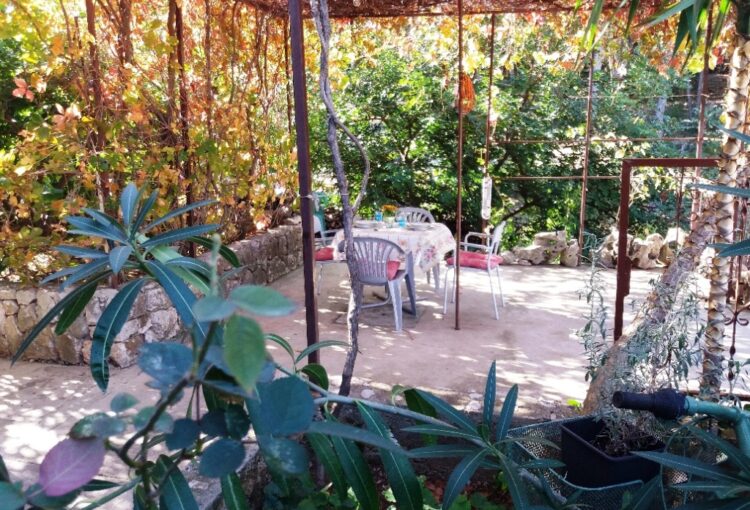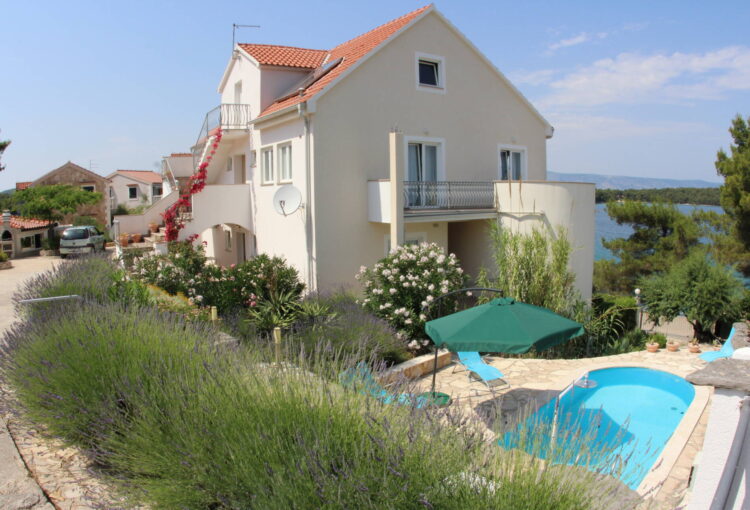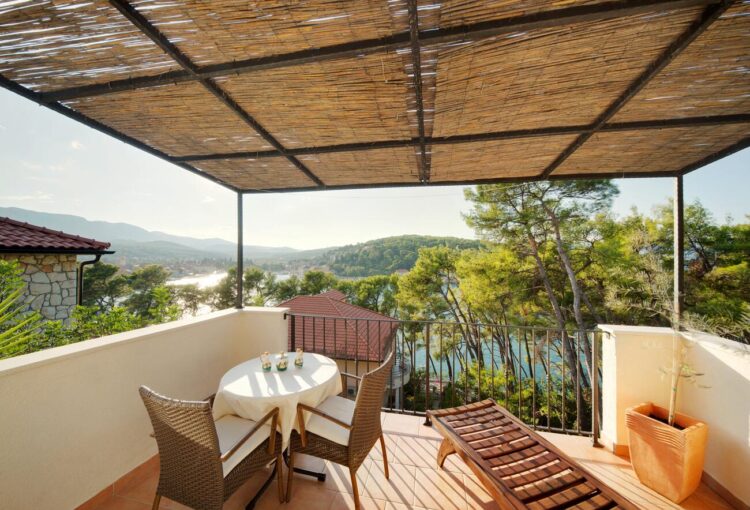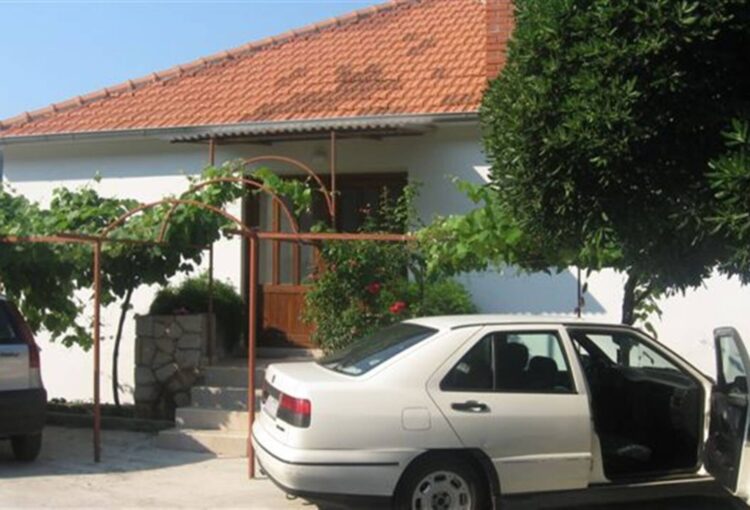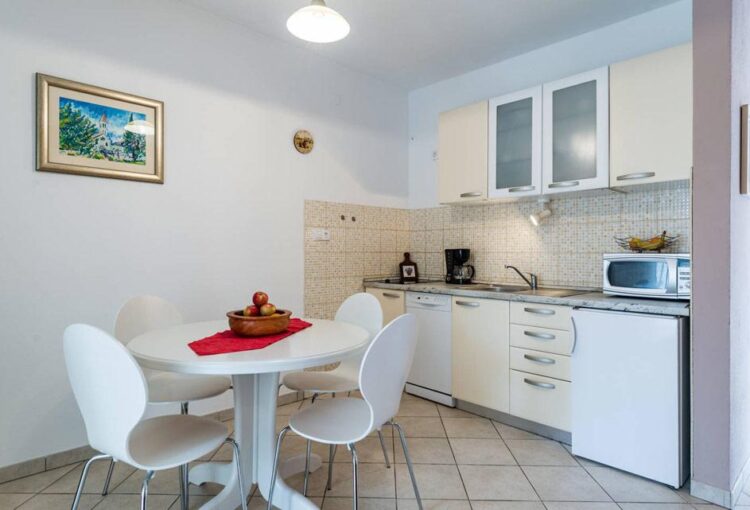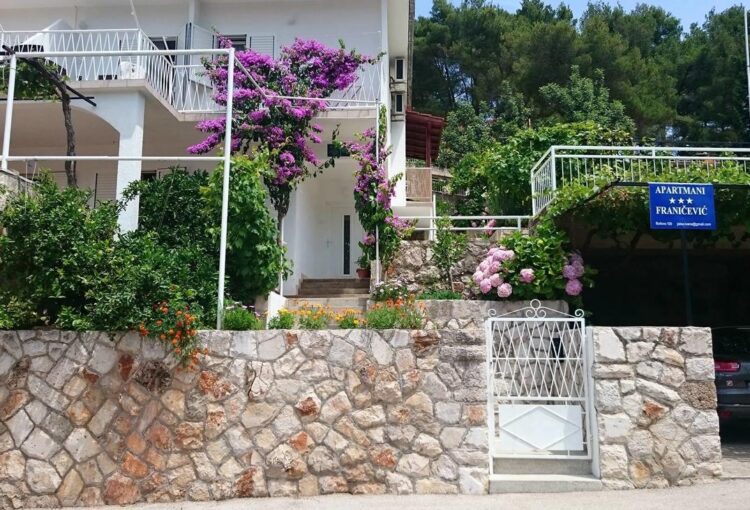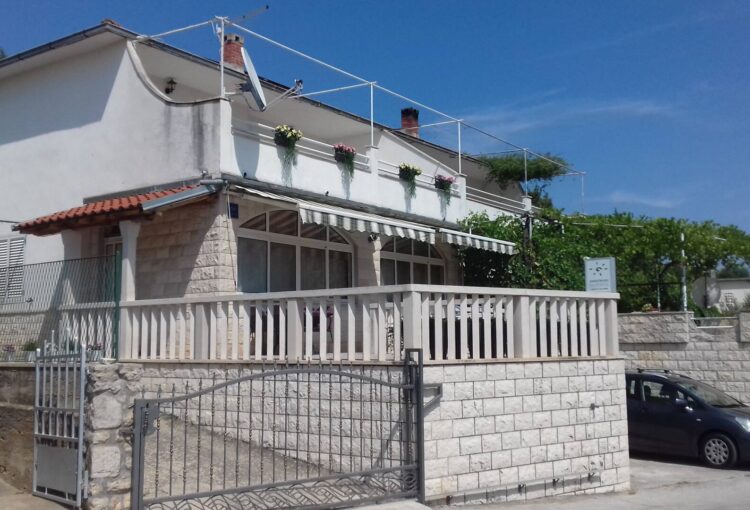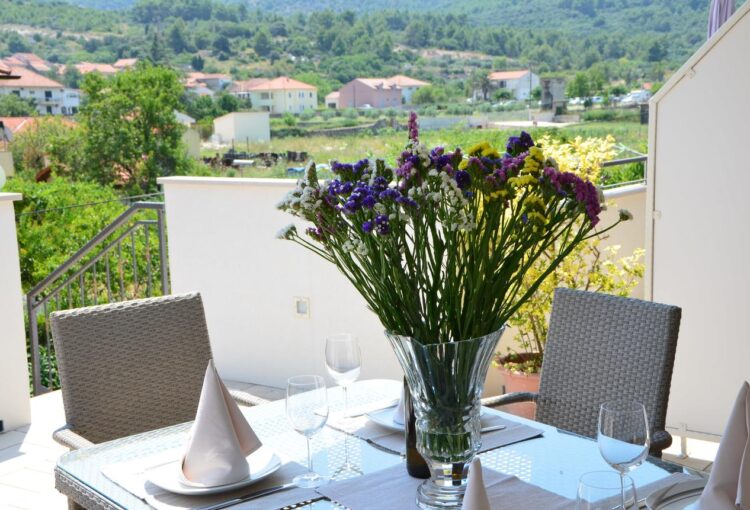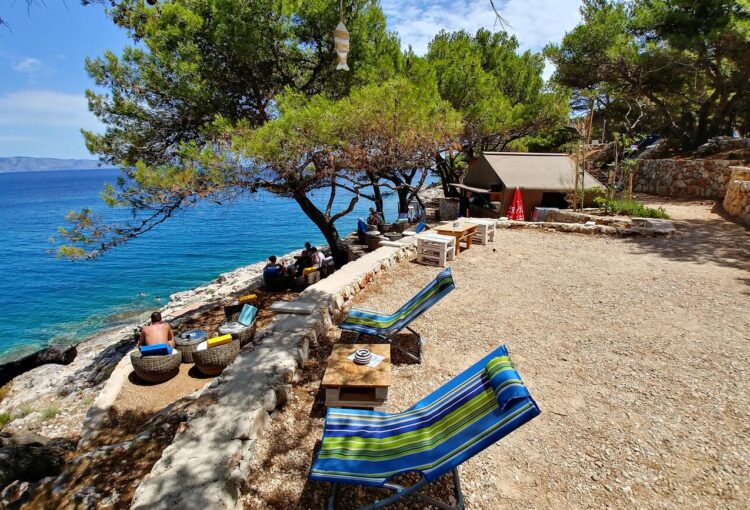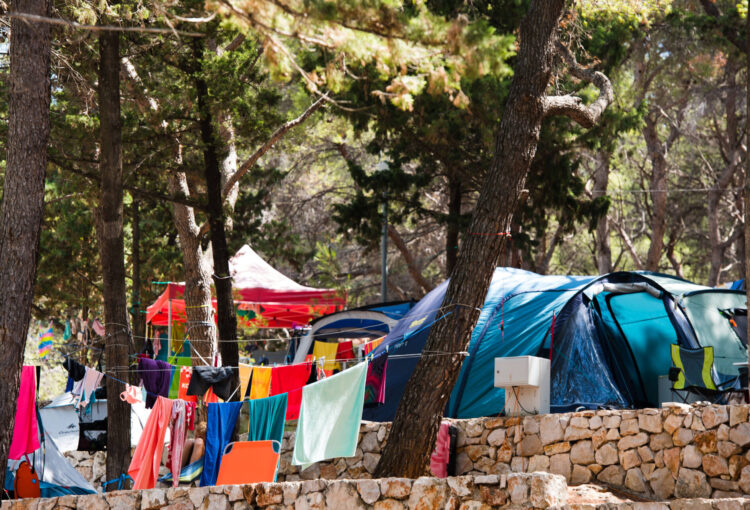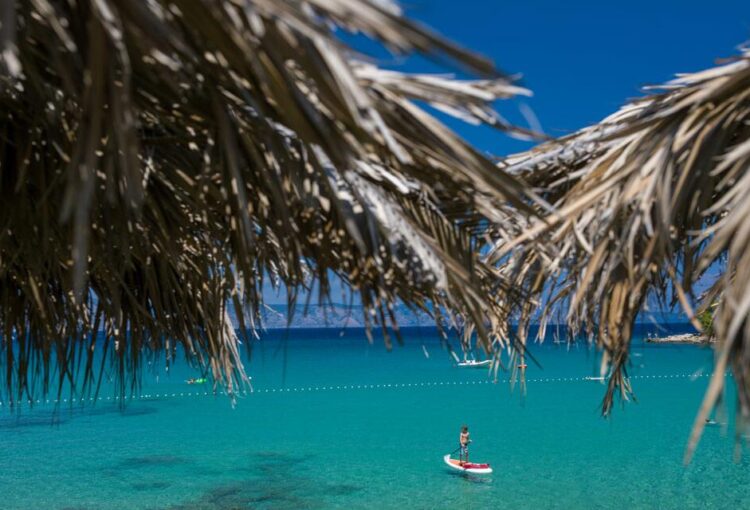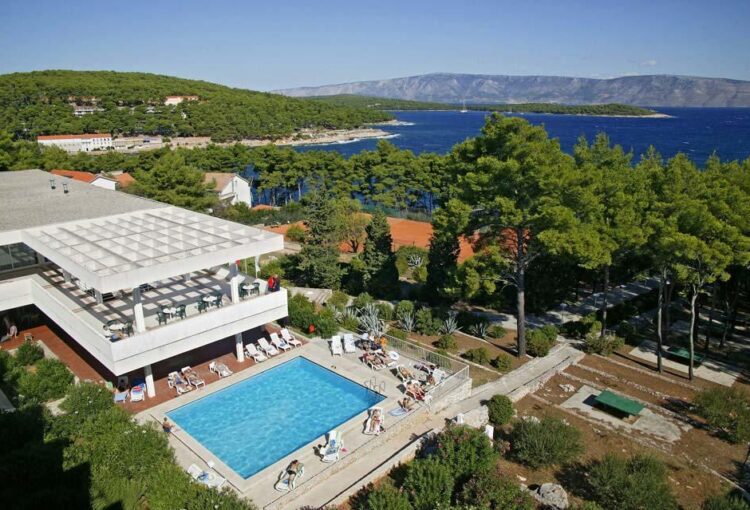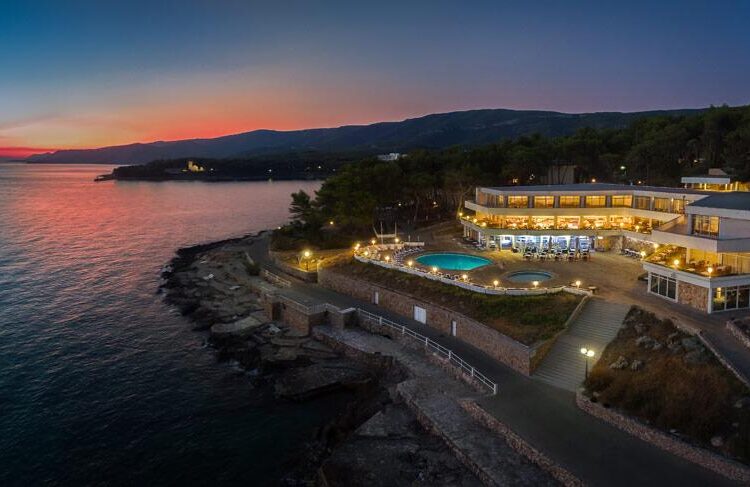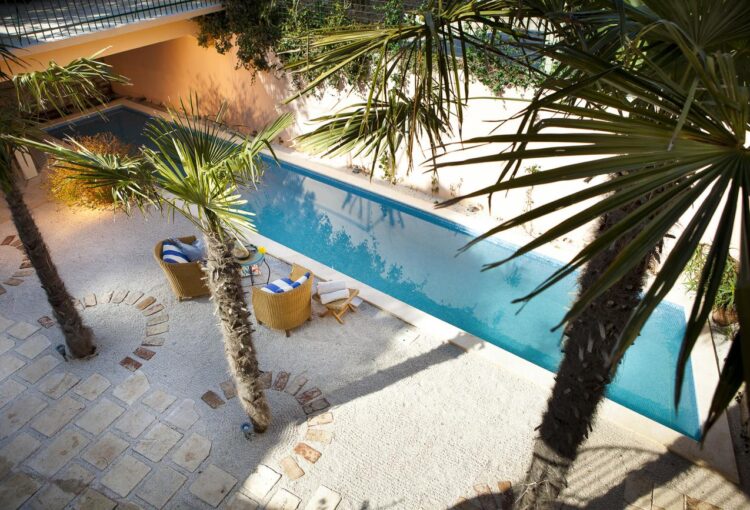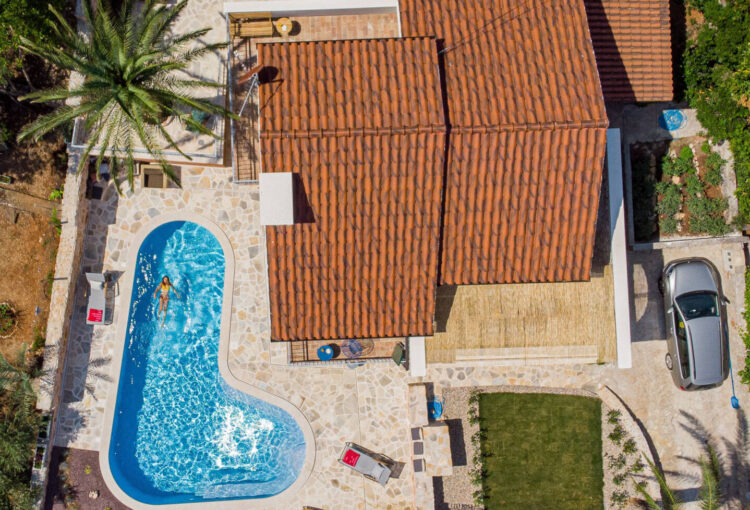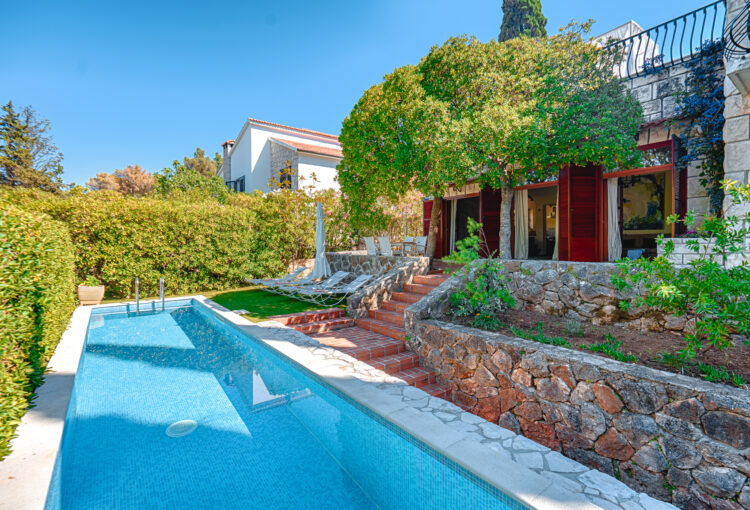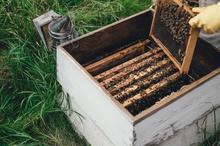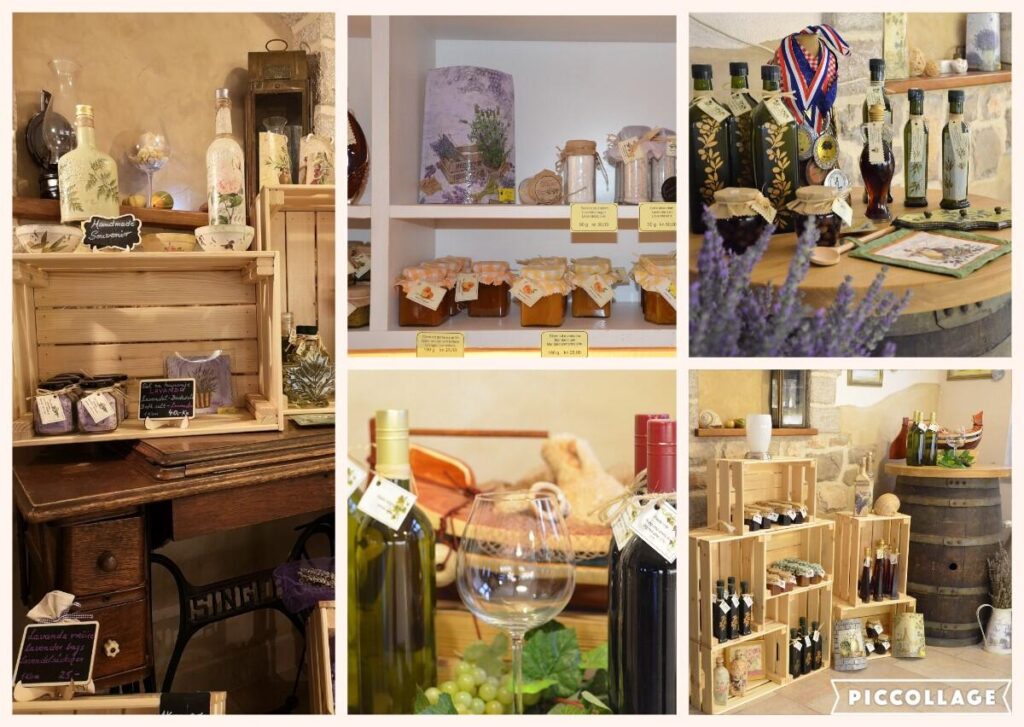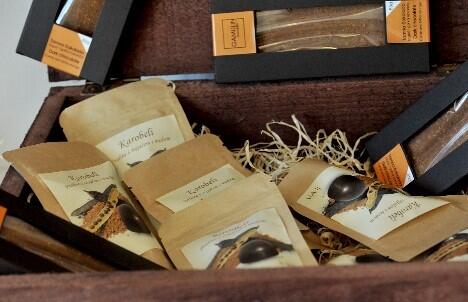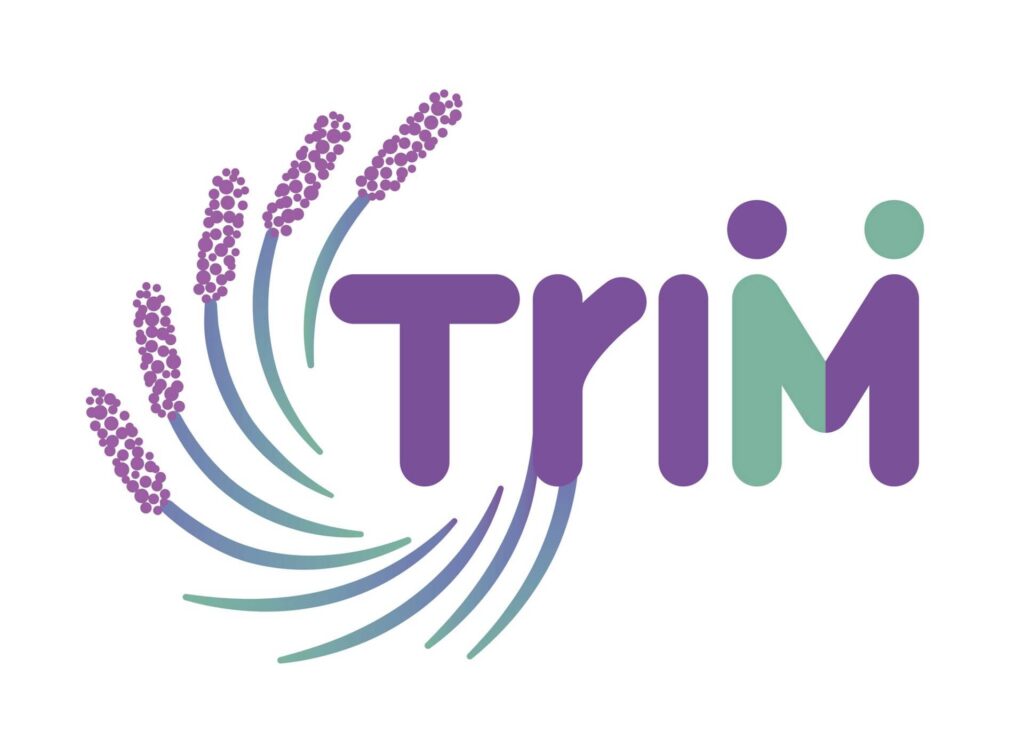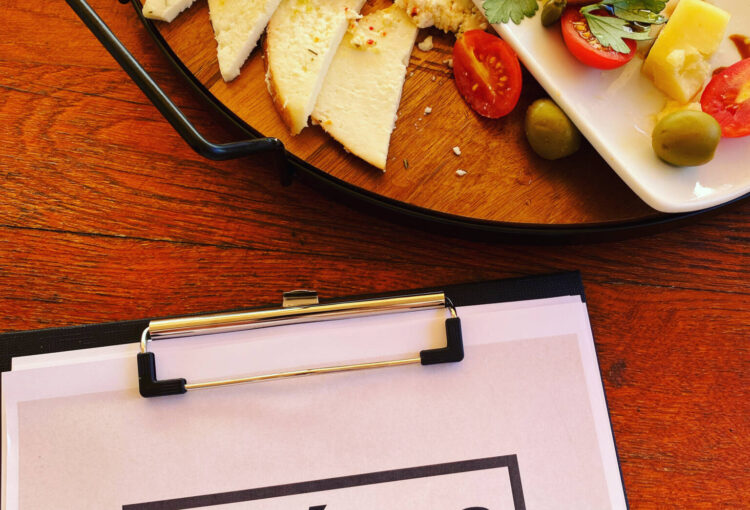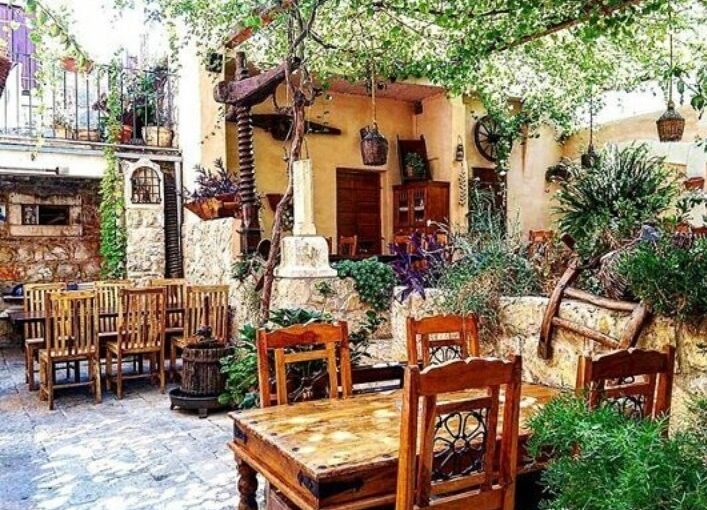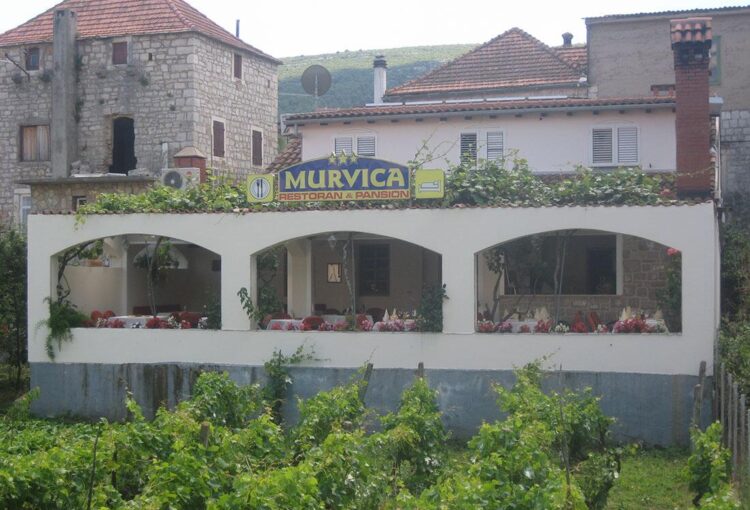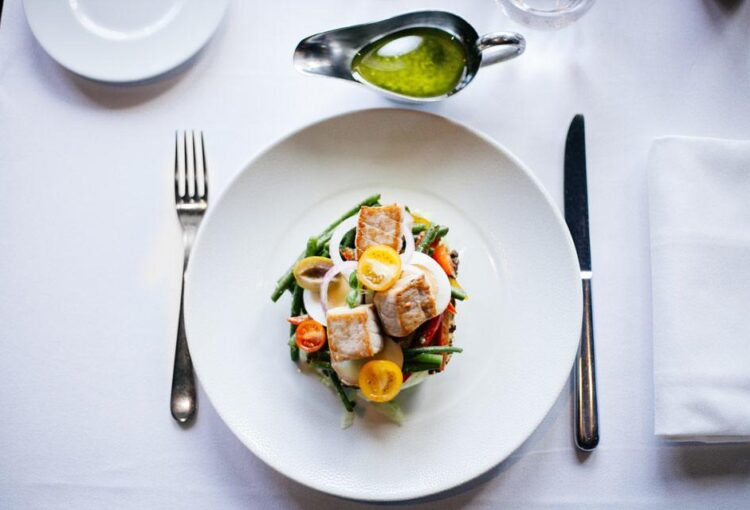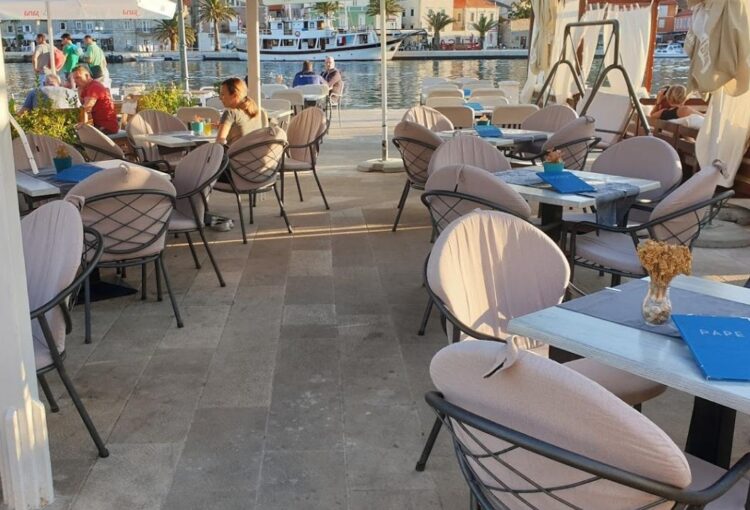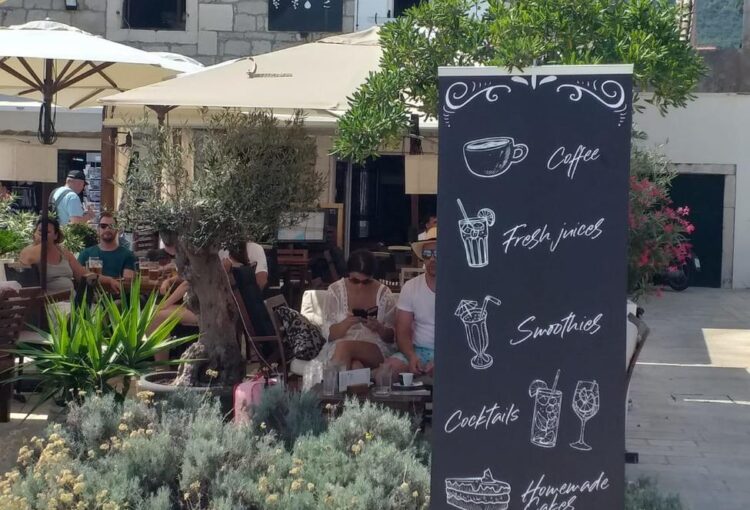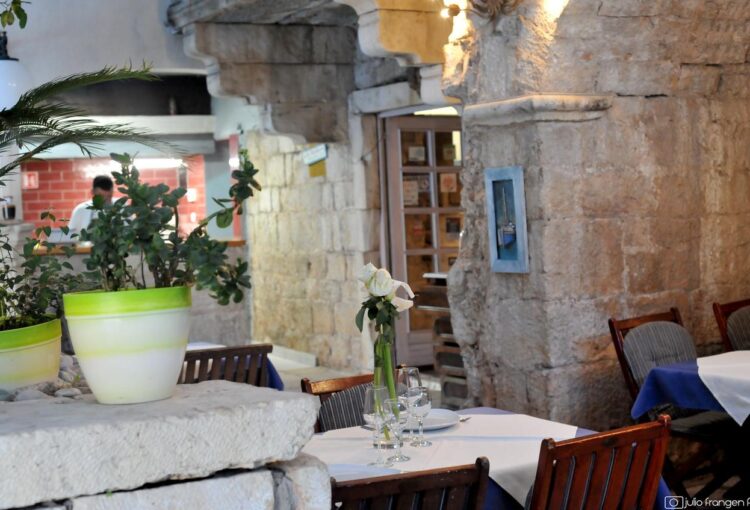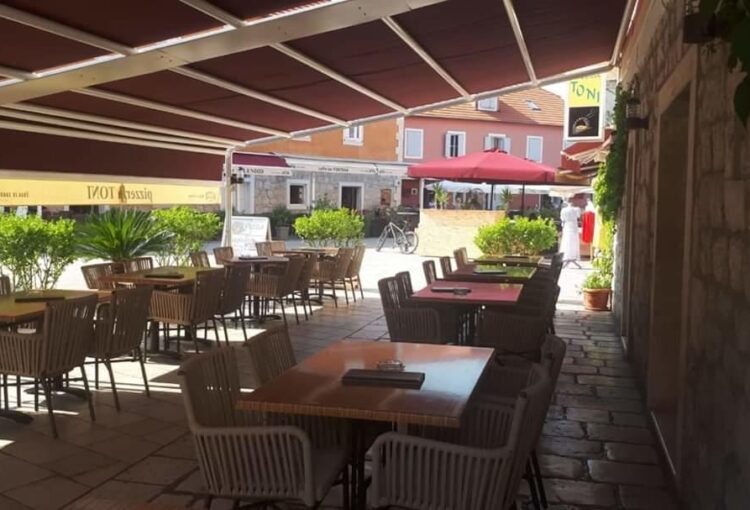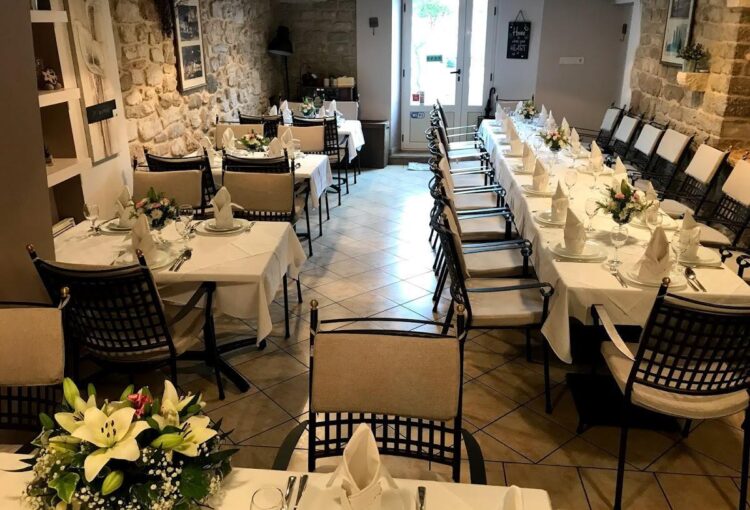About the town
Jelsa may be just a little town in the middle of Hvar Island, as a popular song has it, but it boasts a wide harbour and attractive stone waterfront. Once a fishing centre, in the 19th century Jelsa had an important fleet of trading sailboats, some of which were even ocean-going, and was part of the enviable fishing epopee which lasted some fifty years, plying its trade to Lampedusa and around the Mediterranean.
This picturesque settlement, which in winter is exposed to the northerly wind called the ‘bura’, was first mentioned in 14th century historical records as a port three kilometres away from the village of Pitve, which is situated on the northern slopes of the Gozd hill. Although Jelsa itself counts among the newer of Hvar Island’s settlements, there are signs of human habitation dating back some 5000 years not far away.
In 1868, at the time of national revival amid rising national awareness, the first Croatian reading room / library was opened on the Dalmatian islands. In 1878, the library gained the right to fly the Croatian tricolour flag. In 1880, Jelsa’s school was among the first in Dalmatia to introduce teaching in the Croatian language. The library carried various daily newspapers, and became the centre of political life in Jelsa. It was transferred to the new Town Hall on February 1st 1896, when it held a celebration in honour of its founding over a quarter of a century previously. The Town Hall itself was only given the right to fly the Croatian flag later, in 1907.
The Hotel Jadran was the first to open in Jelsa, back in 1911. It comprised 14 luxuriously furnished bedrooms, a restaurant, bar and reading room. However, it was only in the 1960s and 70s that a bigger hotel was built to cater for tourists on a larger scale. Jelsa’s main claim to fame at the time throughout former Yugoslavia was its disco-club, the first in the region. Nowadays it is the only place on the Dalmatian islands which can boast of having its own superman cartoon character, Lavanderman.
Despite Jelsa being smaller than Hvar Town and Stari Grad, with 1801 inhabitants as against 3771 in Hvar Town and 1885 in Stari Grad (as at the 2011 census), the Jelsa Council covers the widest area of the Hvar local authorities. Its main asset is the ring of several villages surrounding Jelsa, which have a rich tradition of agriculture. Twelve settlements in all belong to the Jelsa Council.
Jelsa is pleasantly compact, with excellent amenities including its beautifully renovated waterfront, and the park which is full of different mature trees offering welcome shade in the heat of the summer. There are several chapels and shrines around the settlement. The Church of Our Lady’s Assumption, dating originally to the 14th century or before, and fortified in the 16th century against Ottoman attacks, is the main parish church in the centre of Jelsa. There is a Lapidarium in the courtyard of the church, which contains some interesting artefacts, and is also used for summer exhibitions of art and photography. In the square in front of the church is a statue by Kuzma Kovačić, one of Croatia’s top sculptors, dedicated to the Cross-Bearers who have taken part in the historic ‘Za Križen’ Procession over the years. On a hill to the south of Jelsa is the 16th century Church of Our Lady of Health.
There is fresh drinking water in Jelsa, which has its own springs, a relatively unusual advantage for a place in the centre of a Dalmatian island. Nowadays the main source of drinking water is piped over from the Cetina river on the mainland, but in high summer Jelsa’s natural springs are joined to the supply to meet the increased demand. The drinking fountain on Jelsa’s main square, the Pjaca, was installed by Mayor Jure Duboković-Nadalini in 1934. It is said that visitors who drink from it will be drawn to stay in Jelsa indefinitely!
And Jelsa has another plus: many wonderful beaches are within walking distance, more than any other settlement on Hvar, which makes it an ideal place for a summer holiday without having to rely on a car. If you do come by car, it means you can easily get to yet more fabulous beaches further afield, including those on the south side of Hvar.
How to get to Jelsa
A catamaran service links Jelsa to Bol on Brač and Split on a daily basis, weather permitting.
Jelsa is 9 km from the main ferry port at Stari Grad, 28 km from Hvar Town, both to the west, and 51 km from Sućuraj to the east, using the main D116 road.
What there is to see and visit in Jelsa:
* Mala Banda, Vela Banda
* Jelsa Park
* The Town Hall
* The Jelsa Library
* The Piazza (Pjaca)
* The Waterfront
* Gradina
* Jelsa’s Fortified Church of St. Mary’s Assumption
* The Lapidarium
* The Cross-Bearers’ Square
* St. John’s Chapel
* The Jelsa Museum in the Dobrović House
* The Church of Our Lady of Health
* Sights you can enjoy over a single leisurely day
Near Jelsa:
* Jelsa’s beaches
* St. Luke’s Chapel
* Tor
* Galešnik
Where you can eat and drink: when you click on these links, from the main menu go to ‘choose destination’ and click on Jelsa in the drop-down menu.
* Restaurants in Jelsa
* Cafes and bars in Jelsa
* Wineries in Jelsa
For Local Souvenirs and Island Products:
* Click here, then go to ‘choose destination’ and click on Jelsa in the drop-down menu.
Where you can stay:
* For a list of rental accommodation available in Jelsa, click here then go to ‘choose destination‘ and click on Jelsa in the drop-down menu.
Special events:
* The UNESCO-listed ‘Za Križen’ Procession takes place overnight from Maundy Thursday to Good Friday each year.
* In normal years there are numerous happenings of various kinds for all age groups throughout the summer. For details, please refer to our events page
Photo gallery
Photo gallery
Accommodation
Nothing found for your criteria.




